Onze Helden Zijn Terug! (Our Heroes Are Back!) is the title of this flashmob video made to celebrate the return of Rembrandt’s Night Watch to the Rijksmuseum in April 2013. It heralded the museum’s grand reopening after a ten year restoration project. Rembrandt’s masterpiece is now back in place in the Gallery of Honour but pretty much everything else has been rearranged.
We entered via Museumstraat, a cycle superhighway that runs straight through the building. The restoration architects had planned to block the cyclists’ right of way but the cyclists objected and won their case. According to Taco Dibbits, the Rijksmuseum’s director of collections, “The bicycle is folkloric in the Netherlands. Touch the bicycle and you touch freedom.”
We dodged the freedom riders for a closer look at two multicoloured wall panels, “Colours based on the Night Watch by Rembrandt” and “Colours based on the Milkmaid by Johannes Vermeer”.
The photo above shows Museumstraat today and the photo below shows it just three years earlier. Level 0 is now below the road and the Gallery of Honour on Level 2 runs directly above our heads.
Up the stairs to the Great Hall then through the Gallery of Honour to the Night Watch at the far end. Despite all the rest this was the first painting; we had to deal with it before we could see anything else.
“Militia Company of District II under the Command of Captain Frans Banninck Cocq, Known as the ‘Night Watch’ by Rembrandt, 1642. Rembrandt’s largest, most famous canvas was made for the Arquebusiers guild hall. This was one of several halls of Amsterdam’s civic guard, the city’s militia and police. Rembrandt was the first to paint figures in a group portrait actually doing something. The captain, dressed in black, is telling his lieutenant to start the company marching. The guardsmen are getting into formation. Rembrandt used the light to focus on particular details, like the captain’s gesturing hand and the young girl in the foreground. She was the company mascot.”
※
Afterwards we just wandered through this vast treasure house, rebounding from one masterpiece to another. It was a great place to get lost. Here are a few favourites. Please be sure to click on the links.
“Isaac and Rebecca, known as The Jewish Bride by Rembrandt, c.1665-1669. It was common for people to have themselves portrayed as historical personages. This man and woman chose the loving biblical couple Isaac and Rebecca. Rembrandt veered from the conventional by representing the pair in an intimate and private moment, and by using a thick, impasto manner of painting. He subsequently worked the paint with a palette knife to create a glittering, sculptural sense of relief.”
“The Milkmaid by Johannes Vermeer, c.1660. A maidservant pours milk, entirely absorbed in her work. Except for the stream of milk, everything else is still. Vermeer took this simple everyday activity and made it the subject of an impressive painting – the woman stands like a statue in the brightly lit room. Vermeer also had an eye for how light by means of hundreds of colourful dots plays over the surface of objects.”
“Banquet Still Life by Adriaen van Utrecht, 1644. The Fleming Adriaen van Utrecht here demonstrated that he could paint virtually anything, from costly tableware to glass, fruit, an enormous lobster on a Chinese plate, a cut-open pasty, and much more. Given its striking low vantage point, this large painting was most likely meant to hang above a chimneypiece.”
“Fishing for Souls by Adriaen Pietersz van de Venne, 1614. At the left are the Protestant north Netherlanders, and at the right the Catholic southerners. Both parties fish for souls in the wide river dividing them. The Protestants’ catch is greater than that of the Catholics. Moreover, at the left the sun is shining and the trees are in leaf. This is a reference to a psalm: the righteous will flourish like a tree bearing fruit, whose leaves never wither.”
“Landscape with Two Oaks by Jan van Goyen, 1641. The two gnarled oak trees, brightly illuminated by a few rays of sunlight, stand out sharply against the threatening sky. Van Goyen drew the trees with his brush. He used thin, almost transparent paint for the foliage and thick, grainy paint for the furrowed trunks. The landscape’s near monochrome palette is enlivened by the blue and red doublets of the two figures resting.”
“Winter Landscape with Ice Skaters by Hendrick Avercamp, c.1608. The high vantage point of this painting turns it into a sampler of human and animal activity during a harsh winter. Hundreds of people are out on the ice, most of them for pleasure, others working out of dire necessity. Avercamp did not shy away from grim details: in the left foreground crows and a dog feast on the carcass of a horse that has frozen to death.”
“The Shell (Conus marmoreous) by Rembrandt, 1650. Collecting exotic shells was a popular hobby in the 17th century, and it excited Rembrandt’s interest too. He had a small natural history collection of his own, including this marbled cone shell; it is similar in shape to the conus cervus, a ‘deer’ cone. He rendered the form and markings of the shell with meticulous care on copperplate. Note that the shell appears in mirror image.”
“Self-portrait, Etching at a Window by Rembrandt, 1648. Rembrandt is hard at work. His concentration is evident as he studies his reflection in the mirror. The artist is drawing what he sees directly onto the copperplate, resting under his hand on a folded cloth. While in earlier self-portraits he dressed up in eccentric costumes, here he portrays himself in a simple hat and jacket, the clothes he normally worked in.”
“The Return to Amsterdam of the Second Expedition to the East Indies by Hendrik Cornelisz Vroom, 1599. Under the command of Jacob Cornelisz van Nack, eight Dutch ships set sail to the Indies in 1598. The first four returned from Bantam (Java) a year later, on 19 July 1599. The other ships had sailed on to the Moluccas (Maluku Islands). They too returned safe and sound, laden with nutmeg, mace and cloves.”
“Landscape with a Stone Bridge by Rembrandt, c.1638. Rembrandt painted only a few landscapes, mostly imaginary mountain scenes. Although The Stone Bridge is composed of elements studied from reality, it probably doesn’t represent a specific place. The painting’s magical quality derives from its dramatic illumination: a beam of sunlight breaks through the clouds, making the approaching storm seem twice as menacing.”
“Self-portrait by Rembrandt, c.1628. Even as an inexperienced young artist, Rembrandt didn’t shy away from experimenting. Here the light glances along his right cheek, while the rest of his face is veiled in shadow. It takes a while to realise that the artist is gazing intently out at us. Using the butt end of his brush, Rembrandt made scratches in the still wet paint to accentuate the curls of his tousled hair.”
“Portrait of a Woman, Possibly Maria Trip by Rembrandt, 1639. The young sitter is assumed to be Maria Trip, the daughter of a wealthy Amsterdam merchant. She displays her wealth with pride. Her dress is trimmed with white linen so fine it is almost transparent. She sports a fortune in pearls, and in her left hand she casually holds the knobbed handle of a folding fan. In 1639 this was still a rare and costly accessory.”
“Portrait of Haesje Jacobsdr van Cleyburg by Rembrandt, 1634. Haesje van Cleyburg, the wife of a wealthy Rotterdam beer brewer, is fashionably yet extremely soberly dressed. She has not been made more beautiful than she was: the wrinkles, shadows under her eyes, the bushy eyebrows, and the greying hair are all rendered with painstaking realism. What makes the portrait so charming is the faint smile that plays across her slightly parted lips.”
“Latona and the Lycian Peasants by Jan Brueghel, 1605. No one insults a goddess and remains unpunished. Tired and parched, Latona, the mother of Apollo and Diana, halts to quench her thirst at a pond. Some peasants working nearby, however, prevent her from doing so. Latona curses them by changing them into frogs and condemning them to spend eternity in the mire. Two peasants already have a frog’s head.”
“The Cuypers Library is the largest and oldest art historical library in the Netherlands. Following an intensive restoration campaign, it has now been fully returned to its former glory.”
“Dolls’ House of Petronella Oortman, c.1686-1710. This dolls’ house is exceptionally realistic. All the contents have been made of authentic materials, and the proportions are exactly correct. The fine cabinet, of tortoiseshell decorated with pewter inlays, was made by a cabinetmaker from France, who worked in Amsterdam for several years. Petronella Oortman was married to the Amsterdam merchant Johannes Brandt.”
“Tea Brick by Ai Weiwei, 2006. This severe block of pressed Pu-Er tea alludes to American Minimal Art of the 1960s and 1970s, but it is also in this shape that such tea from the province of Yunnan has been stored and traded for centuries.”
“Guanyin by unknown artist, 1100-1200. Here the Buddhist deity Guanyin, saviour of people in peril, is represented meditating on a rock. According to legend, he was once found in this position, meditating on the reflection of the moon in water, a symbol of illusion and transience in Buddhism. His pose and face embody inner peace and concentration.”
“Two Temple Guardians by unknown artist, c.1300-1400. Temple guardians are placed at the entrance to a temple to ward off evil. Each of these figures holds a vajra for crushing ignorance. Their open and closed mouths represent a and un, the first and final syllables of Siddham (a script used to write Sanskrit): these syllables symbolize all spoken sounds and scripts, thus all knowledge. Worshippers who enter the temple precinct through the guardians’ gate symbolically acquire this knowledge.”
“The Buddha Amida by unknown artist, 1125-1175. Amida (the Buddha of the Western Paradise) is still popular in Japan. To be reborn in the Western Paradise requires a firm faith in Amida and the repeated chanting of his name. This figure’s soft, round face is characteristic of Japanese Buddha sculptures from the 12th century. The elegant facial features have been stylized, as have the hands and the drapery folds.”
“Shiva Nataraja by unknown artist, 1100-1200. Shiva, in his manifestation as Nataraja (King of Dancers), represented in the anandatandava pose and encircled by a halo of fire, is both the creator and destroyer of the world. Beneath his foot is a dwarf, symbolizing ignorance. Richly decorated bronze figures of Hindu gods were carried in procession on feast days. Carrying poles were inserted through the rings on the base.”
“An Idea (For The Journey) by Edmund de Waal, 2013. In this work, ceramicist Edmund de Waal explores perception: ‘The further away you stand, the clearer they seem; proximity makes them disappear. In my opaque vitrines objects move between profile and dimensionality, blur into a haze and come suddenly into focus. Which is how memory works, of course, shimmering like a mirage heralding us towards the wrong places.”
“The Saint Elizabeth’s Day Flood by unknown artist, c.1490-1495. On the night of 19 November 1421 – the feast day of Saint Elizabeth – much of Holland was flooded. The Dordrecht region was badly hit: 23 villages were submerged and 2,000 people died. The survivors later had an altarpiece made. The outer panels depict the disaster, with the breach of the dike on the right and the undamaged town of Dordrecht on the left.”
“Memorial Tablet by Master of Spes Nostra, c.1500 This ‘memorial tablet’ was painted in commemoration of the four canons depicted on it. The partially decayed corpse in the open tomb reminds the viewer of his own mortality and asks for his prayers: ‘Whoever passes by, look and weep. What you are, I once was, what I am, you will become, I beseech you to pray for me’.”
“Geertruy Haeck Kneeling in Adoration before Saint Agnes by unknown artist, c.1465. This painting is a ‘memorial tablet’, intended to honour the memory of a deceased person. It probably hung near the tomb of Geertruy Haeck-van Slingelandt van der Tempel in the church of the convent of Saint Agnes in Dordrecht. Although Geertruy was not herself an ordained nun, she is dressed in a nun’s habit as a sign of her piety.”
“Landscape with an Episode from the Conquest of America by Jan Jansz Mostaert, c.1535.
…This is the first painting to show how Spanish soldiers confronted the indigenous population and conquered America. Mostaert depicted the landscape in the tradition of Netherlandish painting, adding exotic elements, such as the unclothed natives and various fauna: parrots, a monkey and a porcupine in the left foreground…” (Also two natives wearing Santa Claus hats! This is pre-Coca-Cola America!)
“Paradise by Herri met de Bles, c.1541-1550. The mountainous, heavily wooded landscape in this tondo is Paradise. Represented around the fountain, the source of life, are episodes from the story of Adam and Eve, the world’s first couple. The earth is encircled by two spheres, which refer to the creation of the sun, moon and stars, and to the separation of heaven from the sea.”
“The Well-stocked Kitchen by Joachim Beuckelaer, 1566. The central theme of this painting is not the profuse display of vegetables, fruit, meat, poultry and pots and pans on offer by these kitchen maids. Instead it is Christ’s visit to Mary and Martha, which is depicted inconspicuously in the background. The contrast between the foreground and the background conceals the message of the painting: do not give in to earthly temptations.”
“The Battle of Waterloo by Jan Willem Pieneman, 1824. In 1815 Napoleon was finally defeated at the Battle of Waterloo. This painting –the largest in the Rijksmuseum –depicts the turning point in the battle, when the Duke of Wellington, the British commander, hears that Prussian help is on the way. Victory and the end of twenty years of war are in sight. The Dutch Crown Prince, later King William II, lies wounded on a stretcher. His bravery earned him the nickname the Hero of Waterloo.”
“Forest Scene by Barend Cornelis Koekkoek, 1848. Of all Dutch landscape painters, Koekkoek is perhaps the most Romantic. He specialized in splendid panoramas of the valley of the Rhine and forest scenes with majestic trees, which at the time were called ‘Wodan’s Oaks’ (Wodan being the Dutch name for Odin, the major god in Norse mythology). In 1834 Koekkoek settled in Cleves in Germany, over the border from Nijmegen. He found German scenery, with its hills and the Rhine, more romantic than the Dutch landscape.”
“Five Javanese Court Officials by unknown artist, c.1820-1870. The axiom ‘clothes make the man’ also held true in Indonesia. These are not actual portraits, but ‘types’. The accurately rendered garments and batik motifs indicate not only the region from which these men came, they also provide information about their rank and status. These resolute, confident figures are exceptional and were probably painted by a non-Western artist. In European depictions, Indonesians were usually depicted as adversaries, colonial subjects or ‘innocent’ primitives.”
“Self-portrait by Vincent van Gogh, 1887. Vincent moved to Paris in 1886, after hearing from his brother Theo about the new, colourful style of French painting. Wasting no time, he tried it out in several self-portraits. He did this mostly to avoid having to pay for a model. Using rhythmic brushstrokes in striking colours, he portrayed himself here as a fashionably dressed Parisian.”
We eventually found our way back to where we started from. We had lunch in the café and visited the shop then went for a lie down in the courtyard and gazed up at the chandeliers. There we collected our thoughts, composed ourselves, got into the right frame of mind ready to face the cycling outlaws, herberts and evangelists out on the streets. Where are the Night Watch militia when you need them?


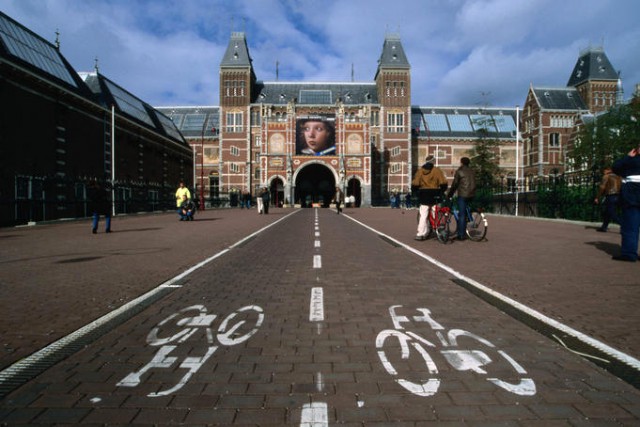

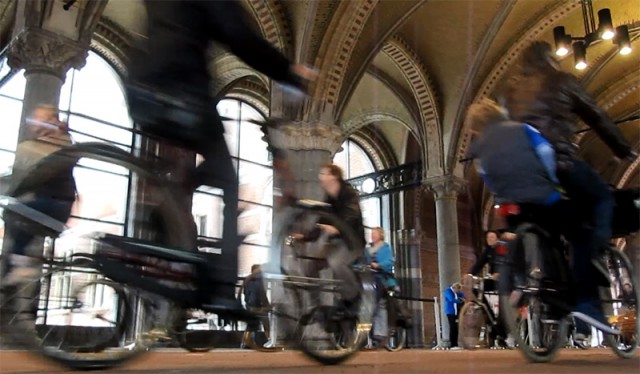

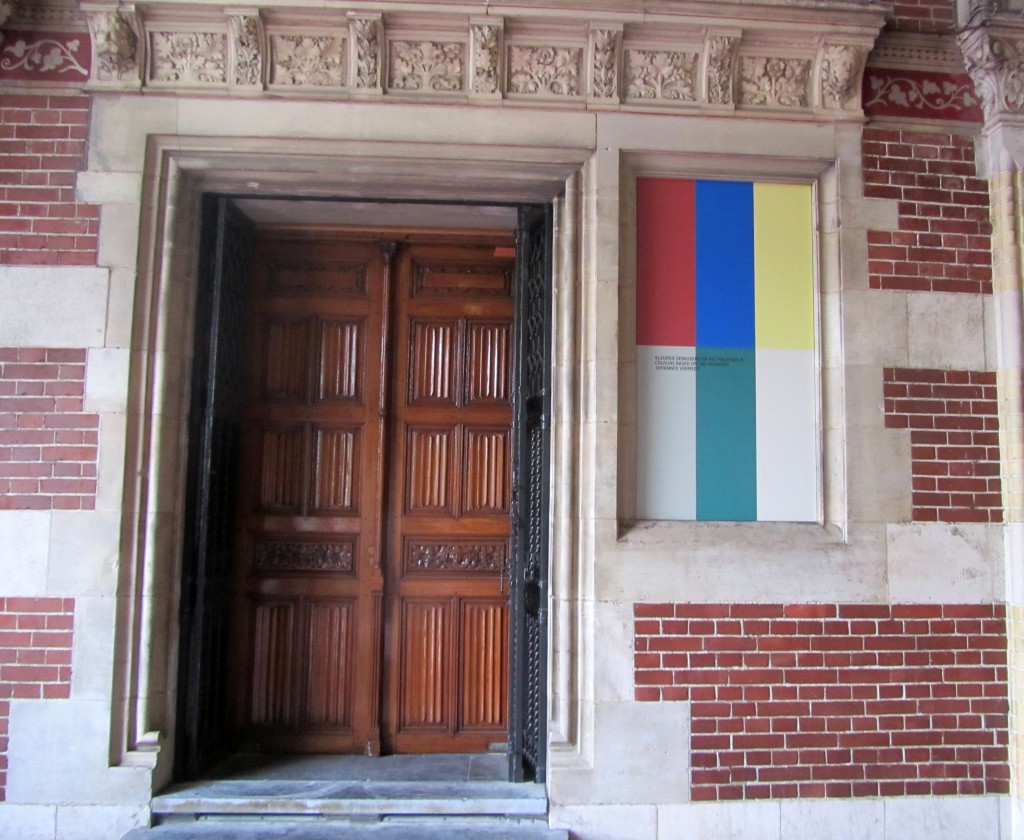
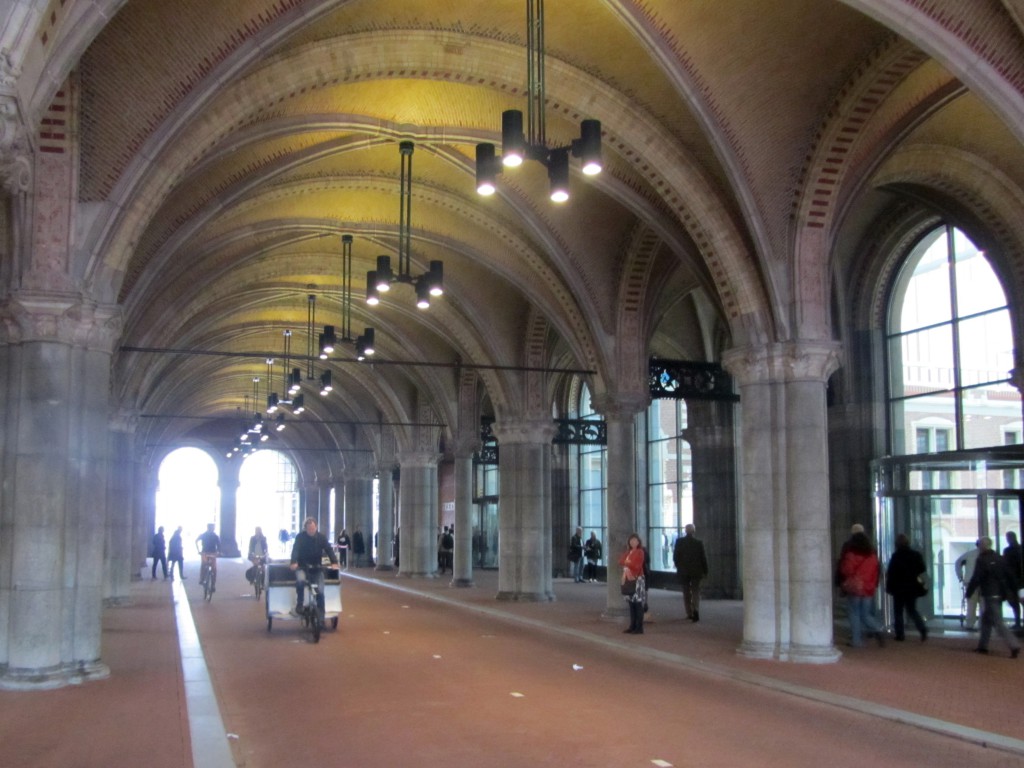
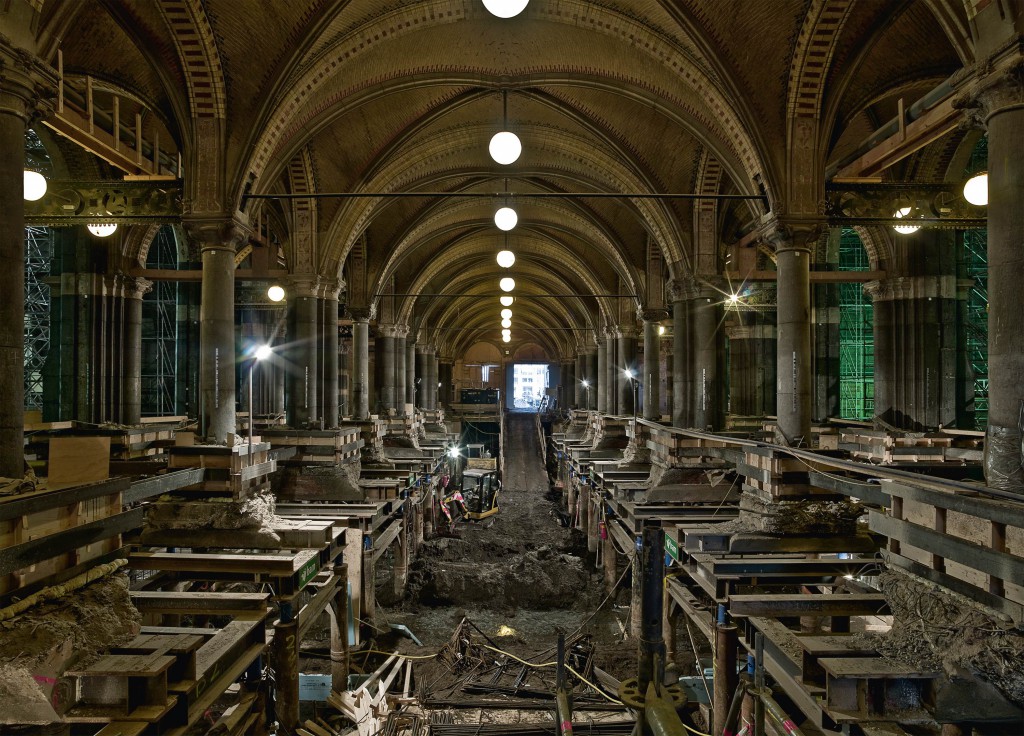
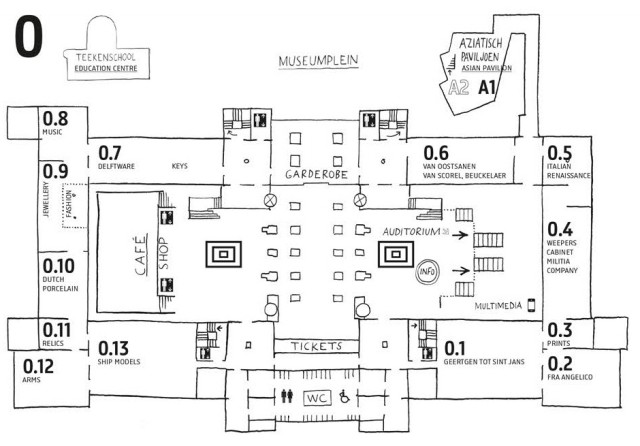


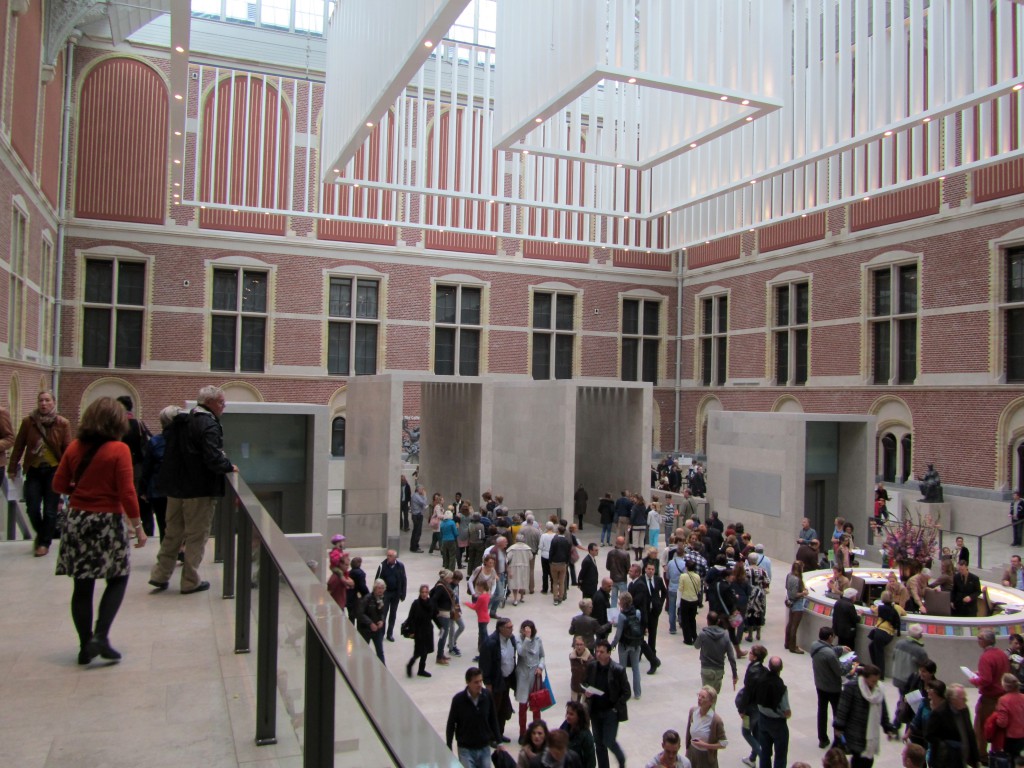
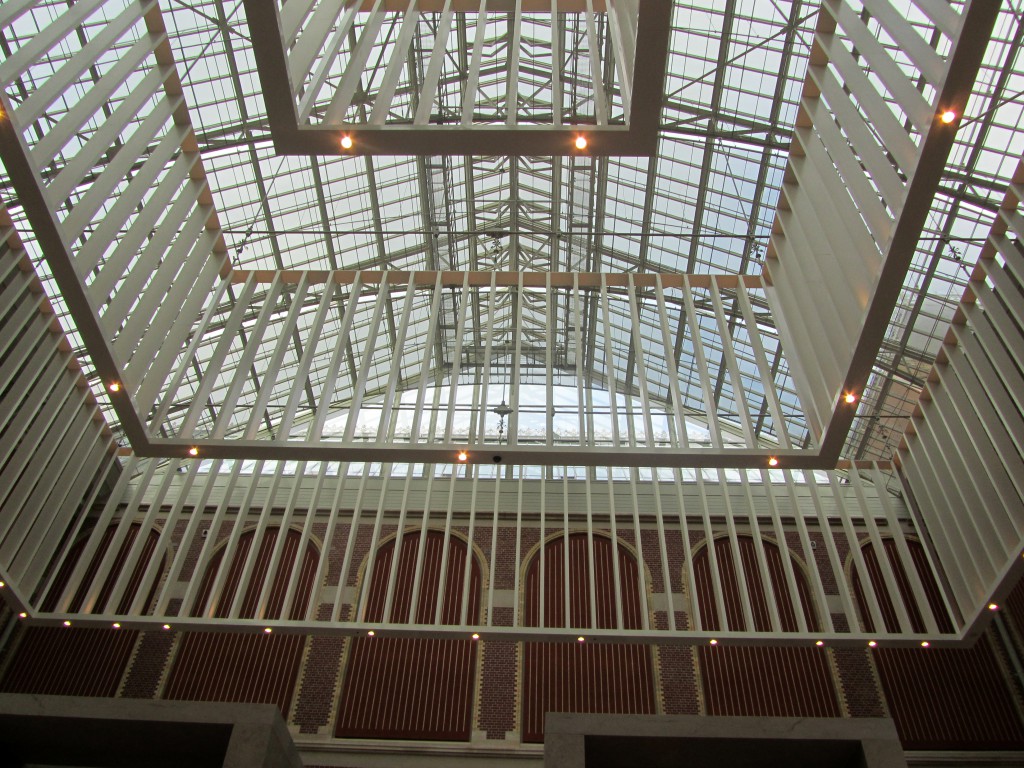
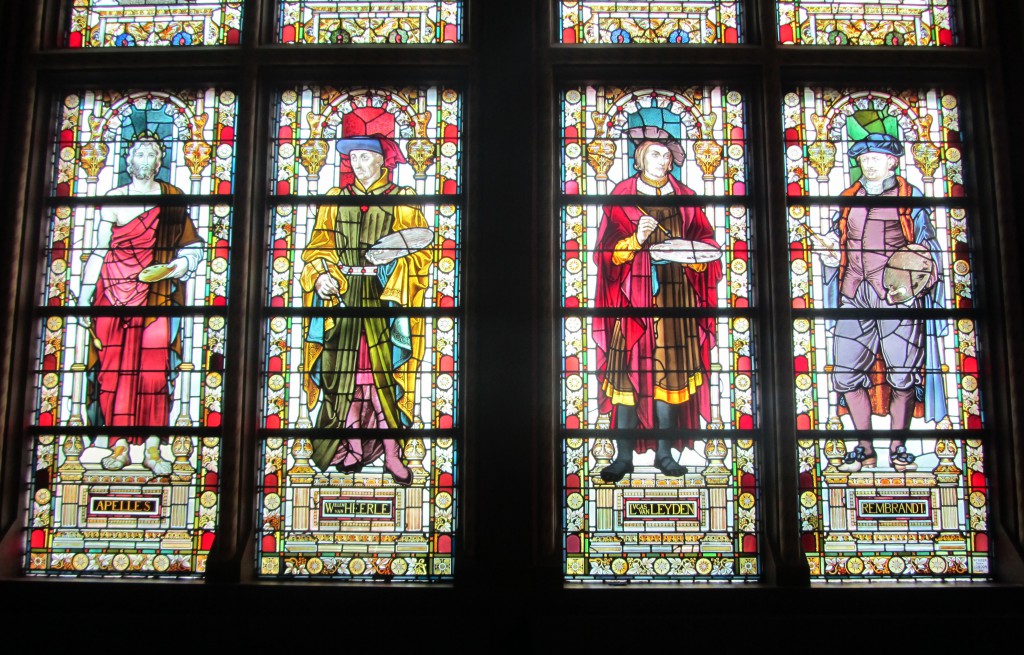

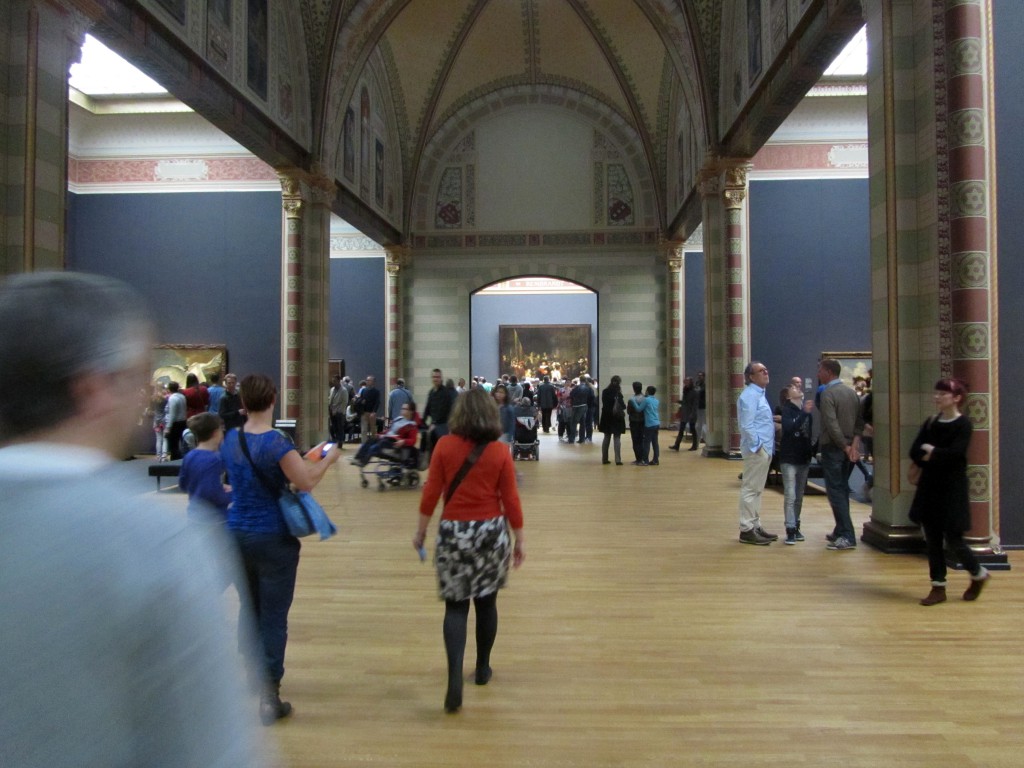
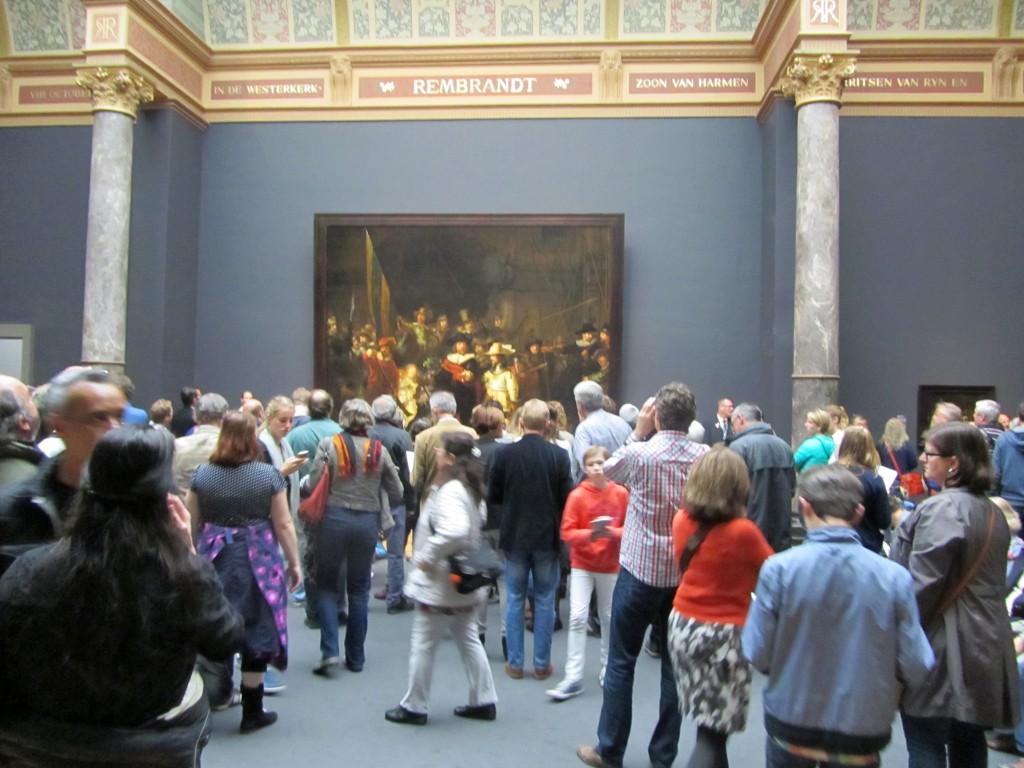
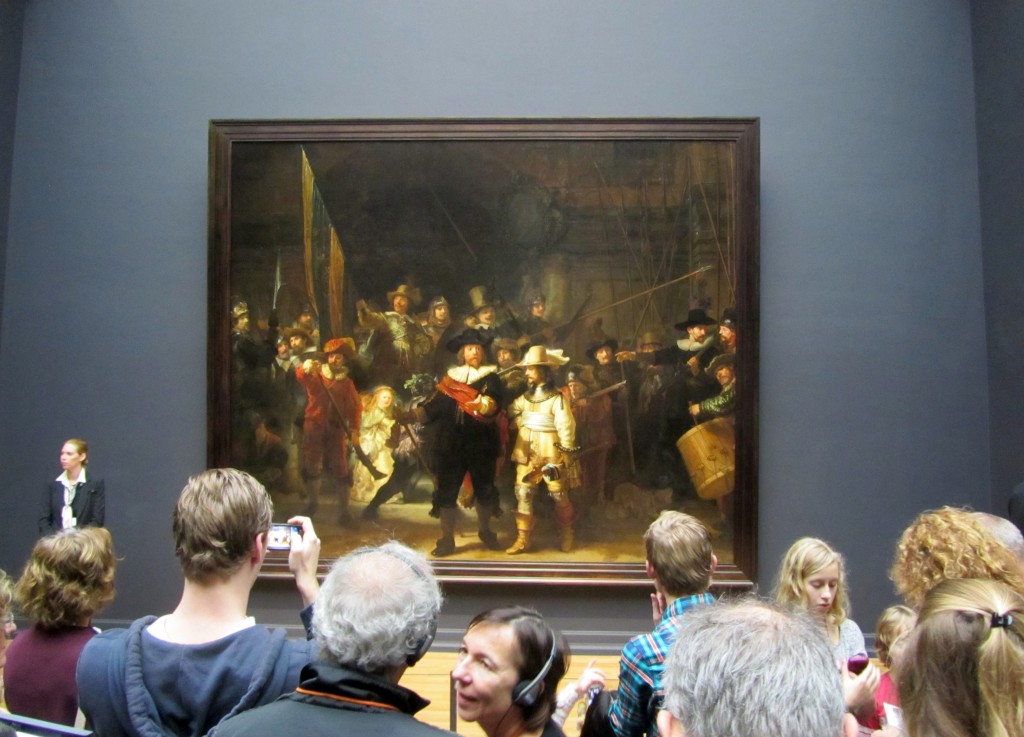
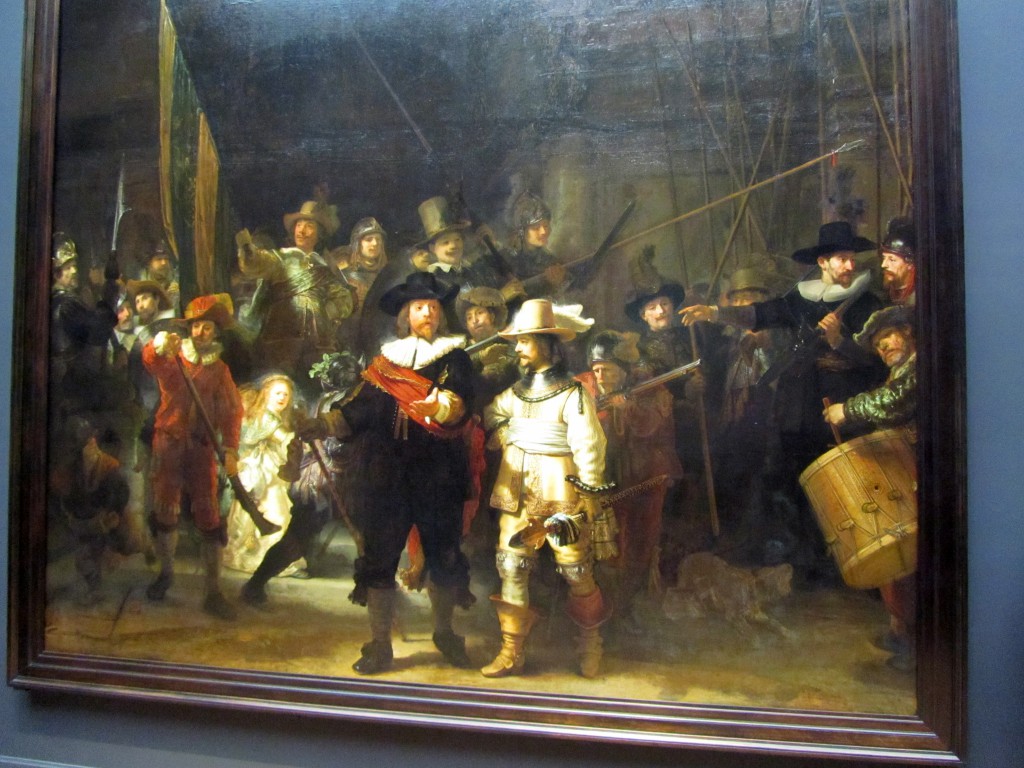
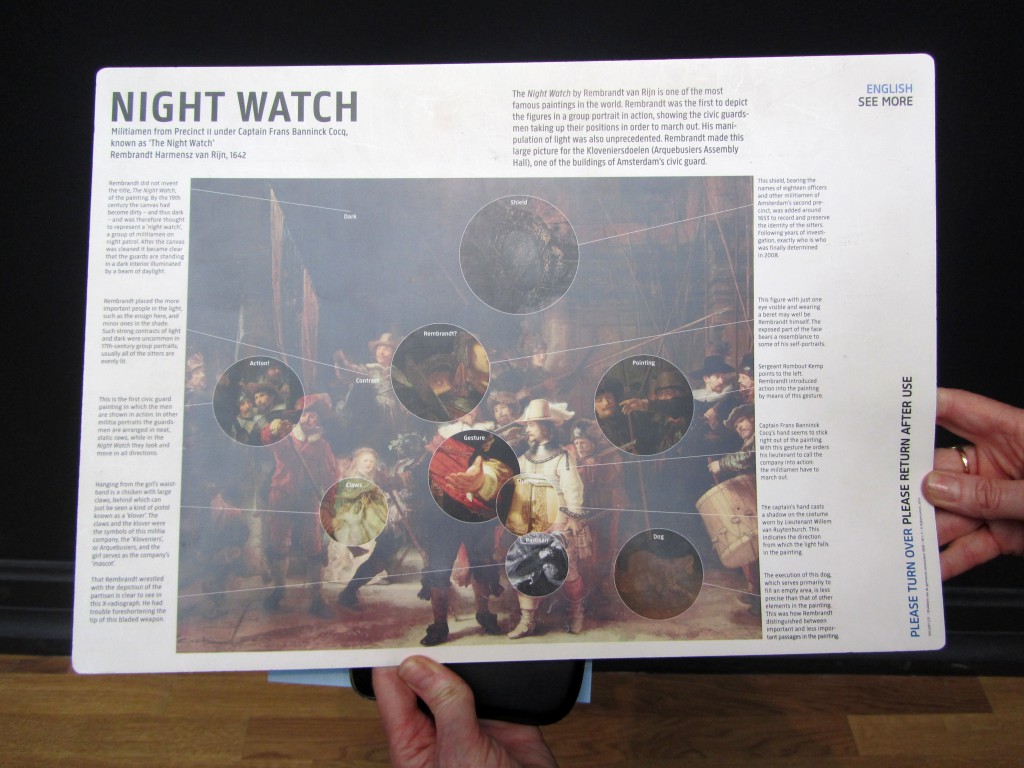
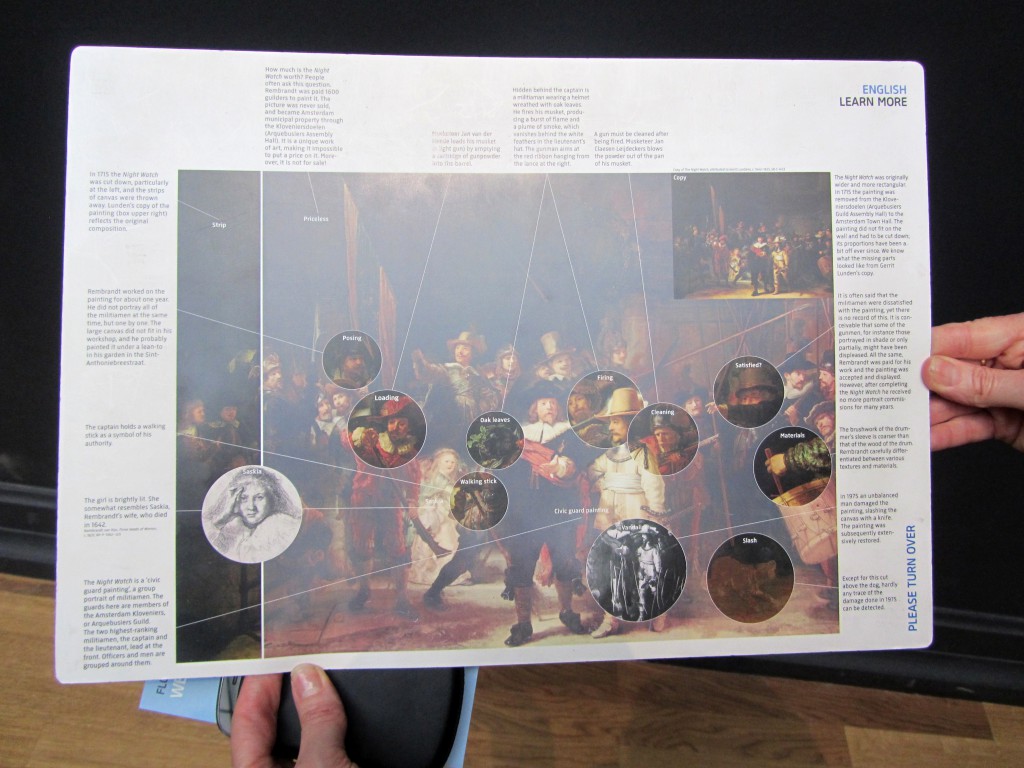
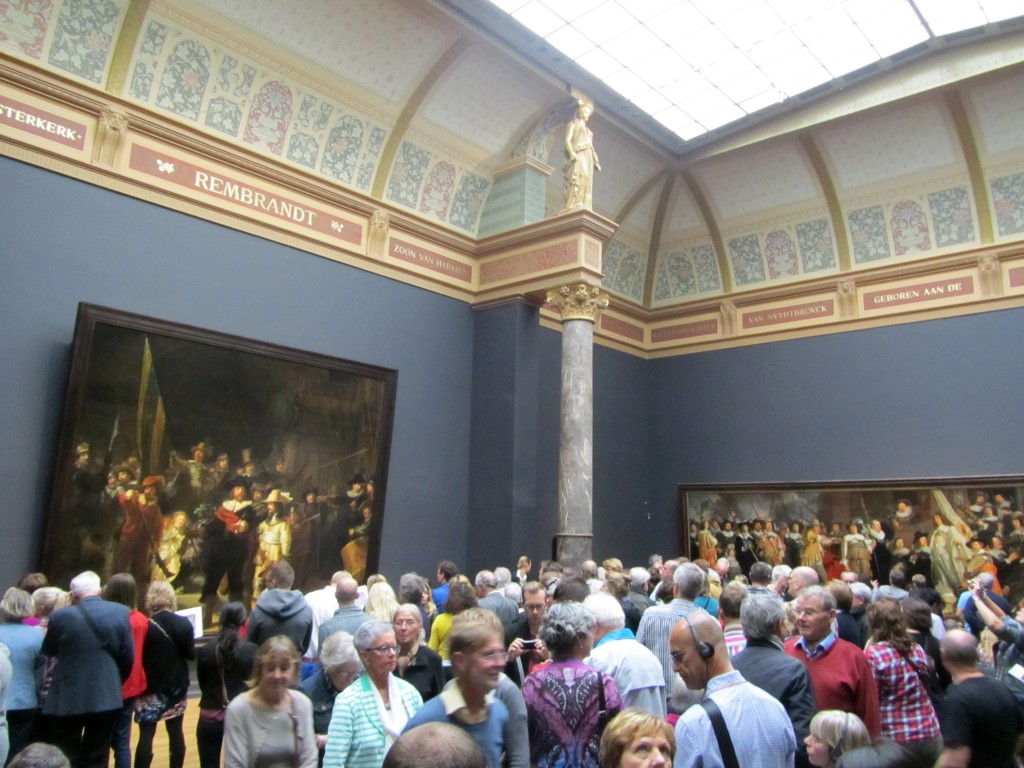


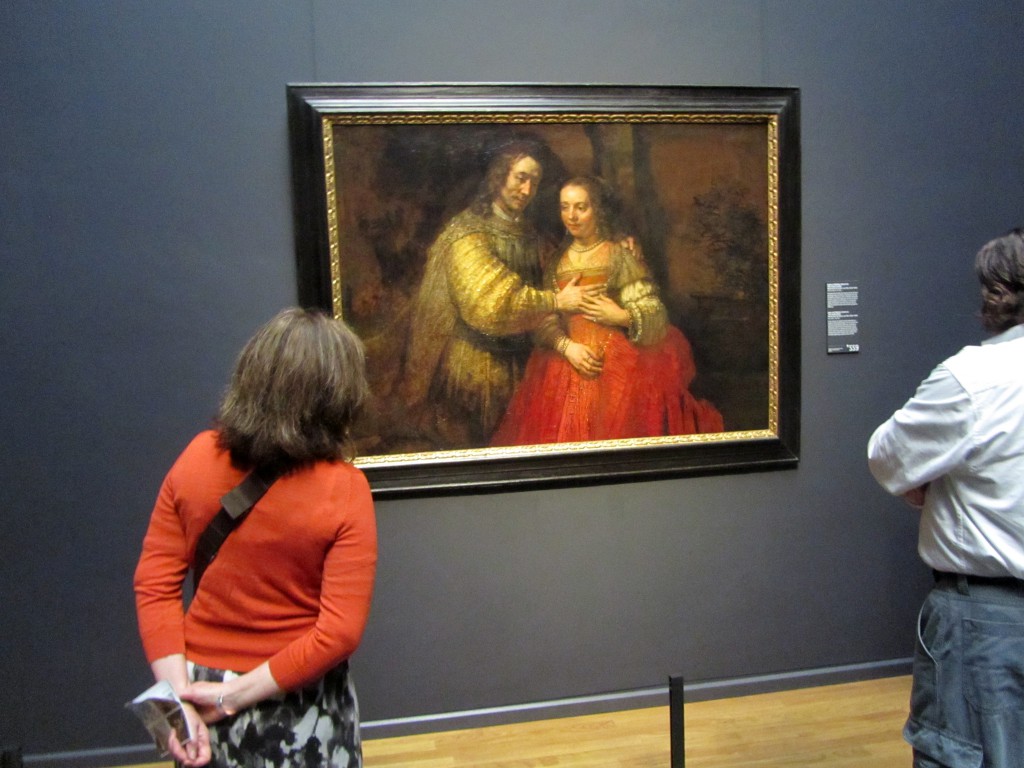

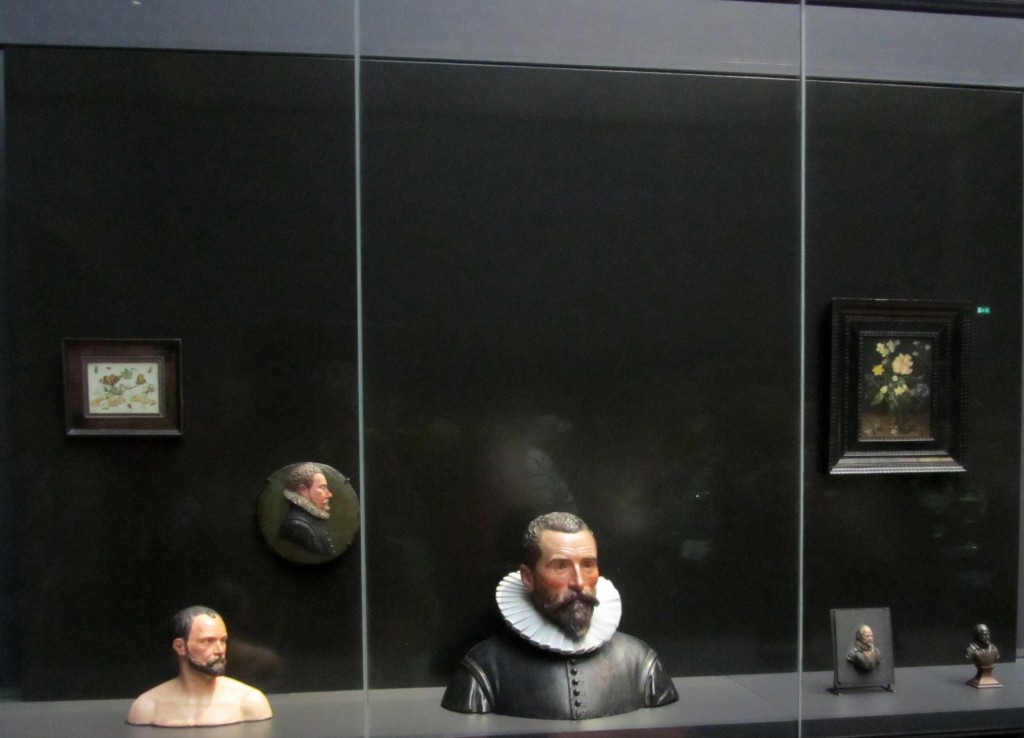
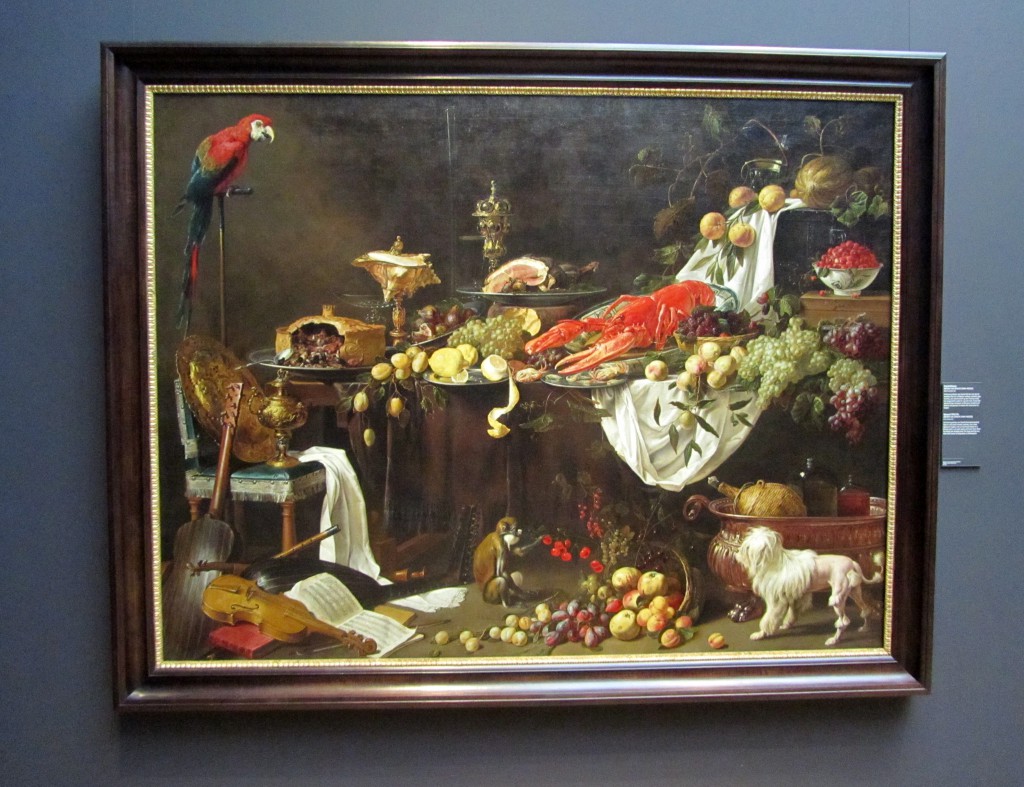
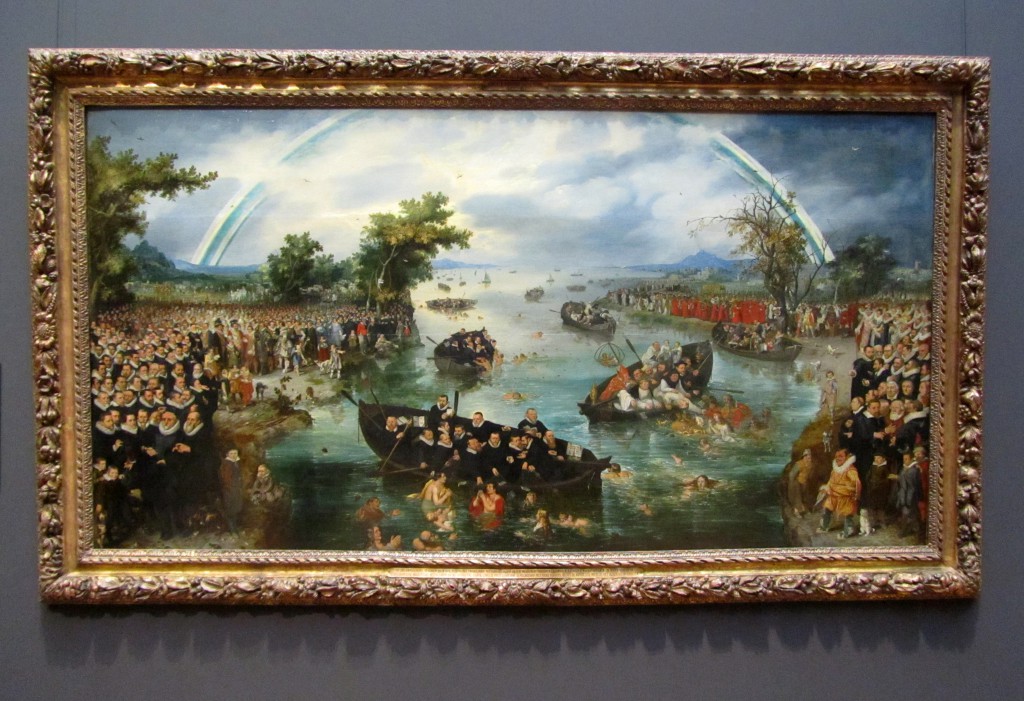
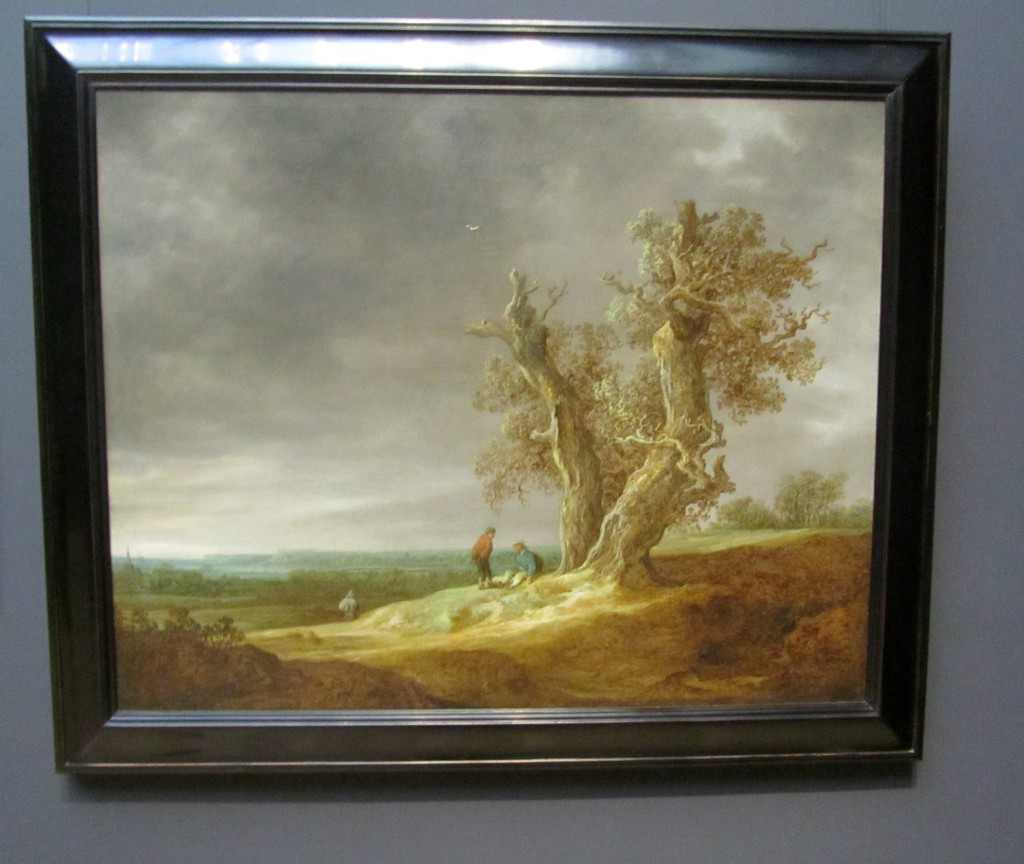
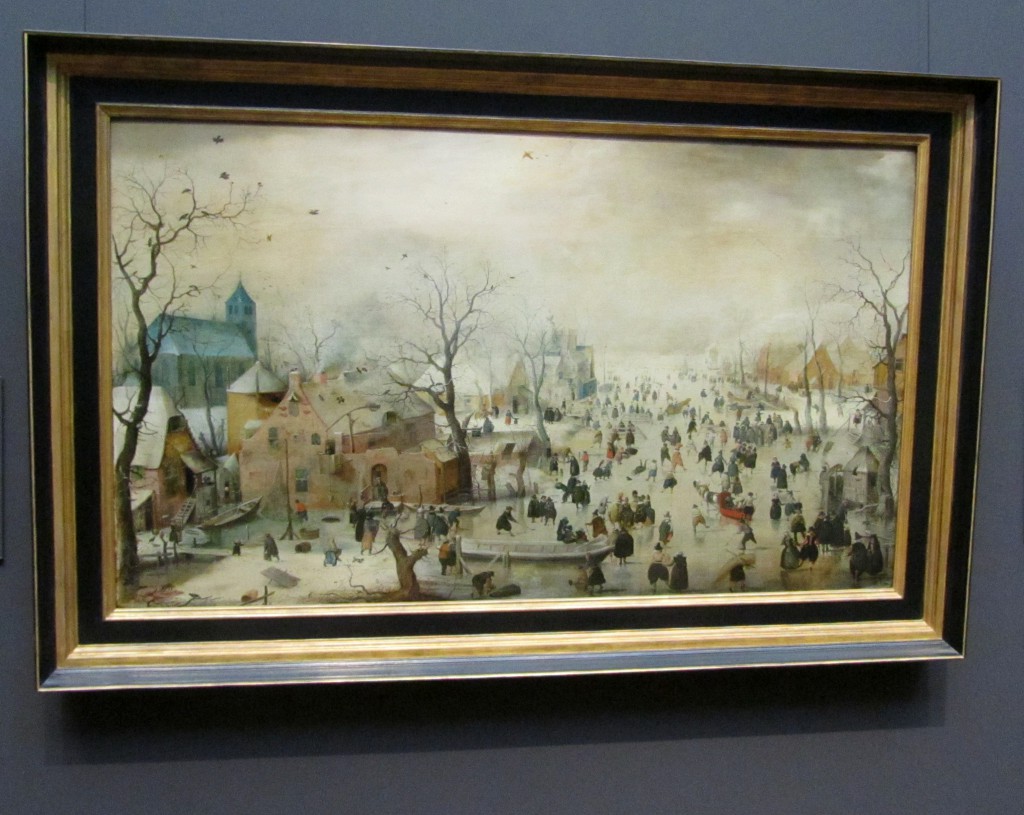
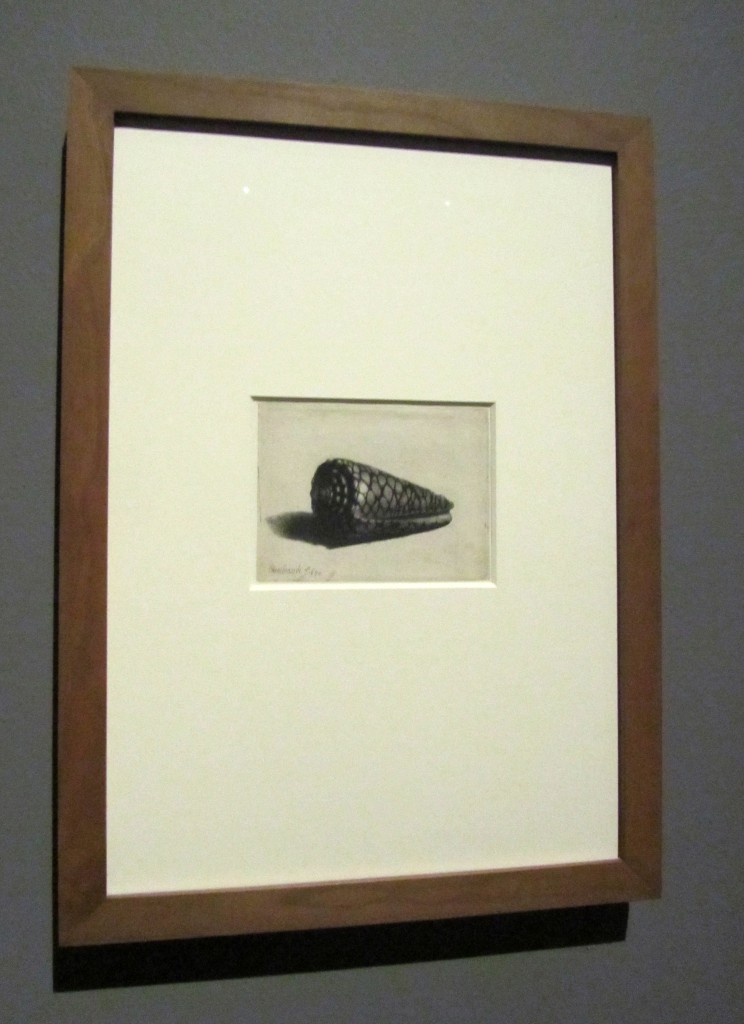

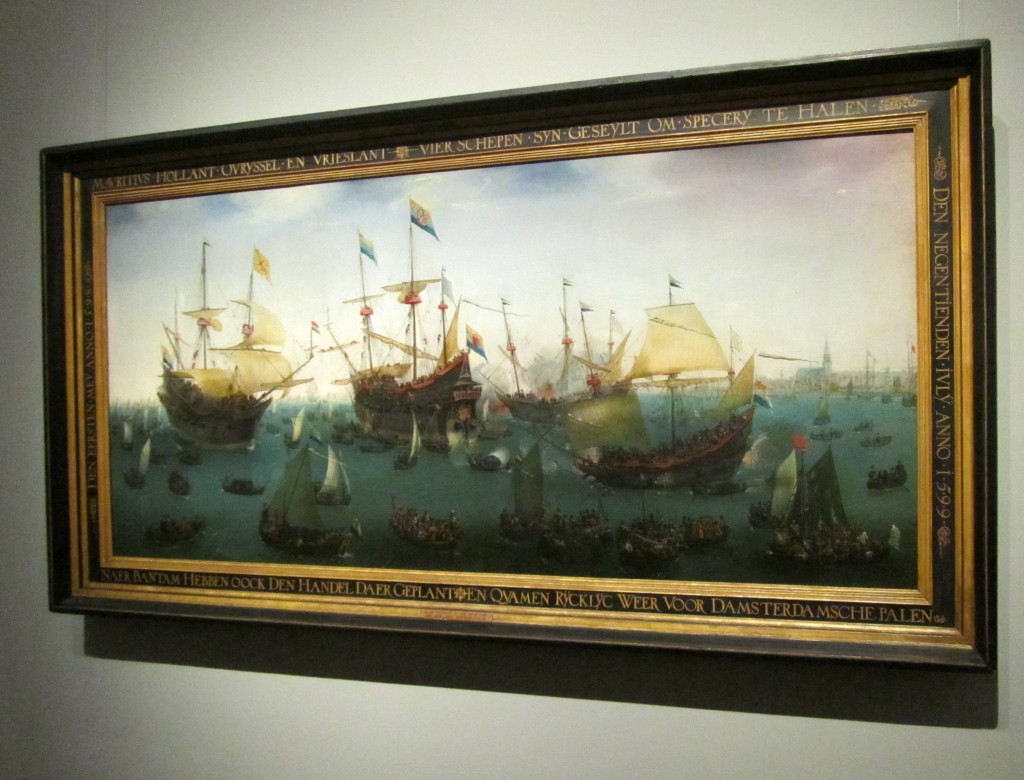
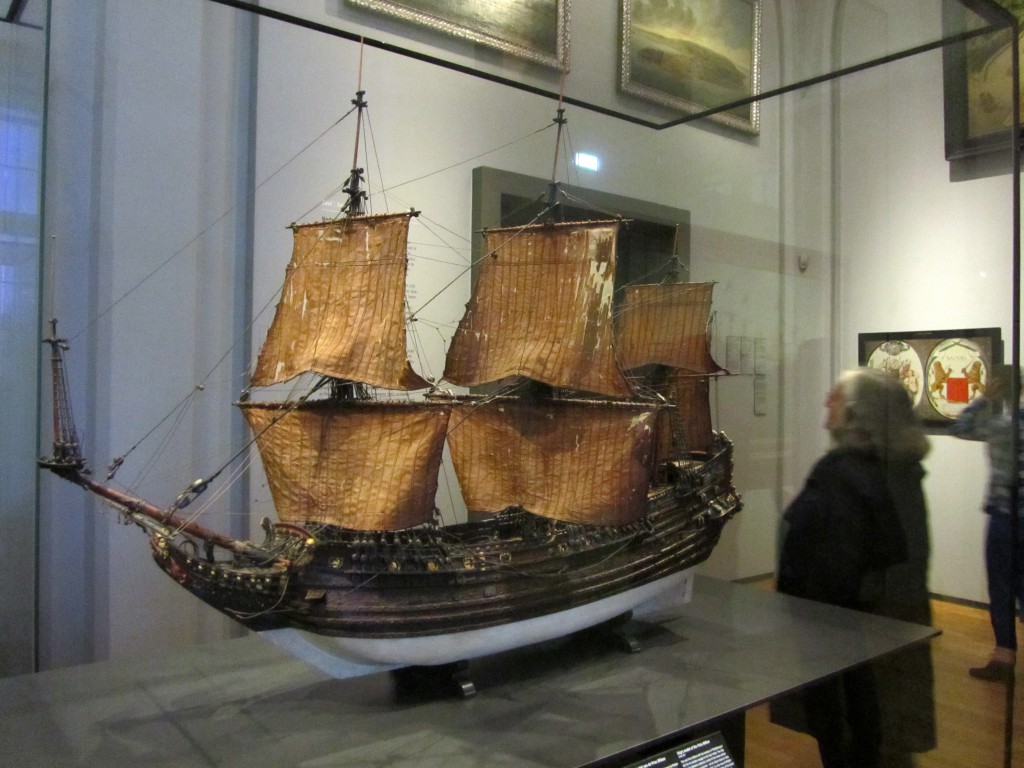
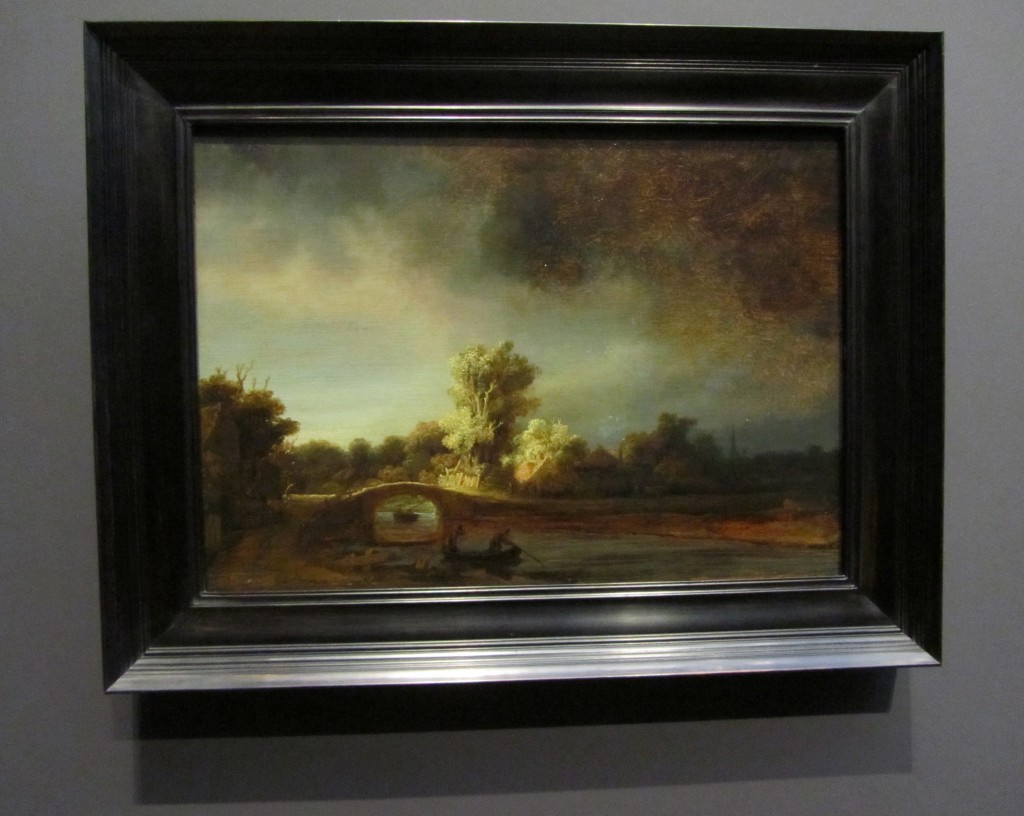
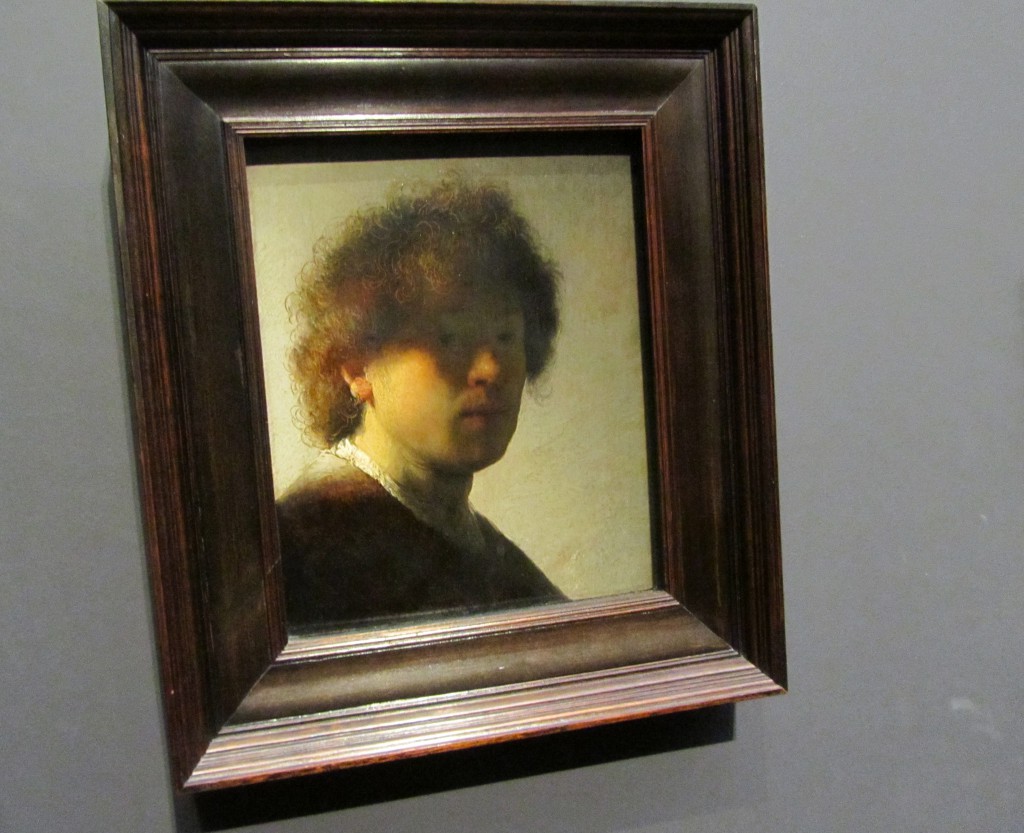


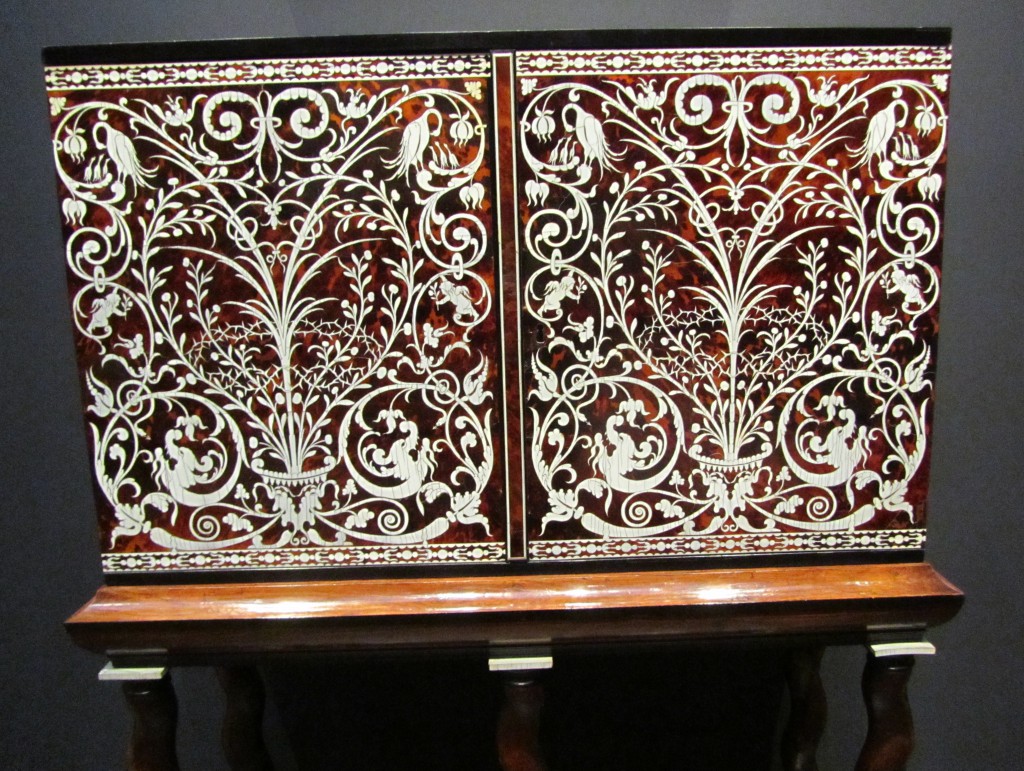

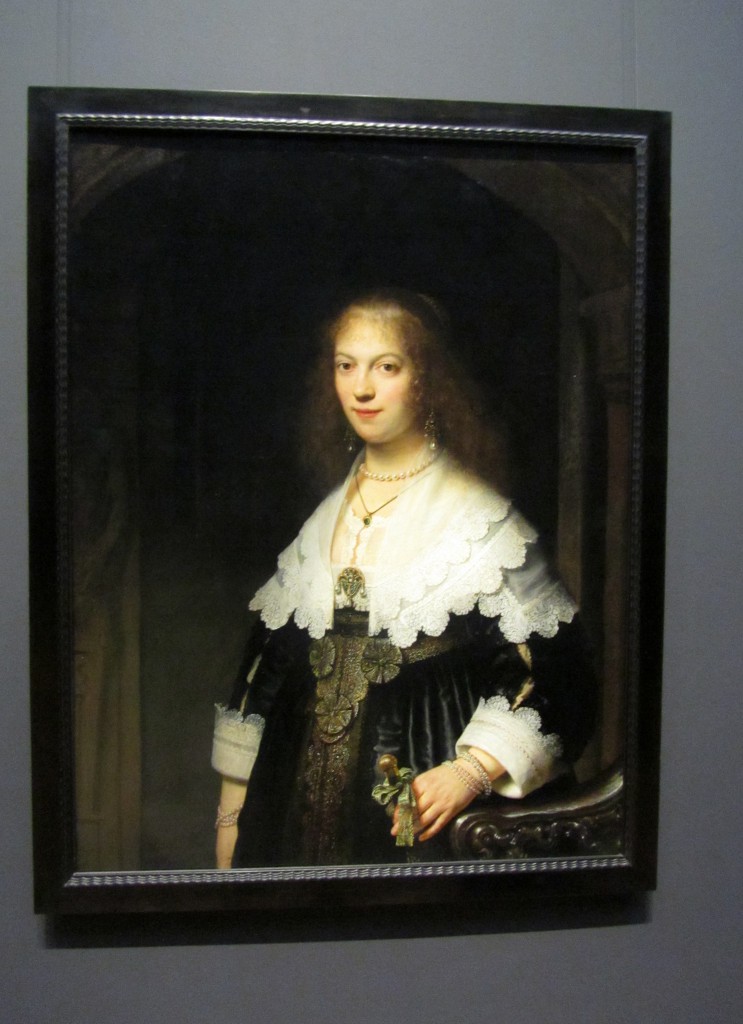

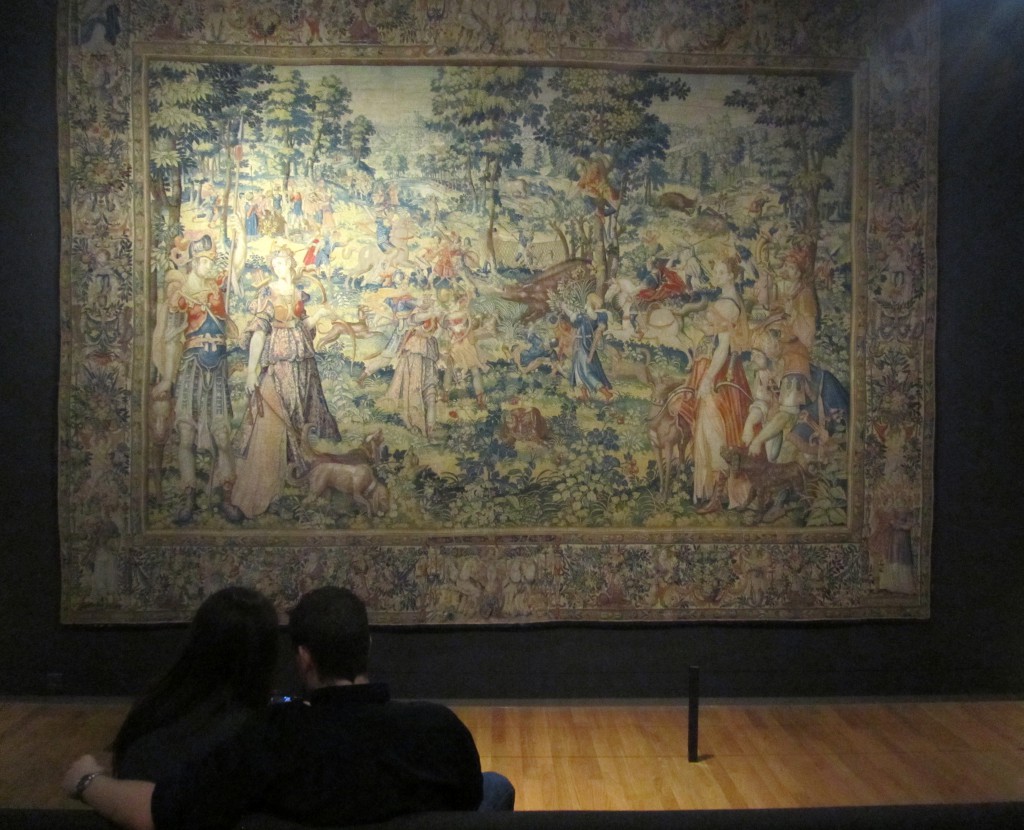

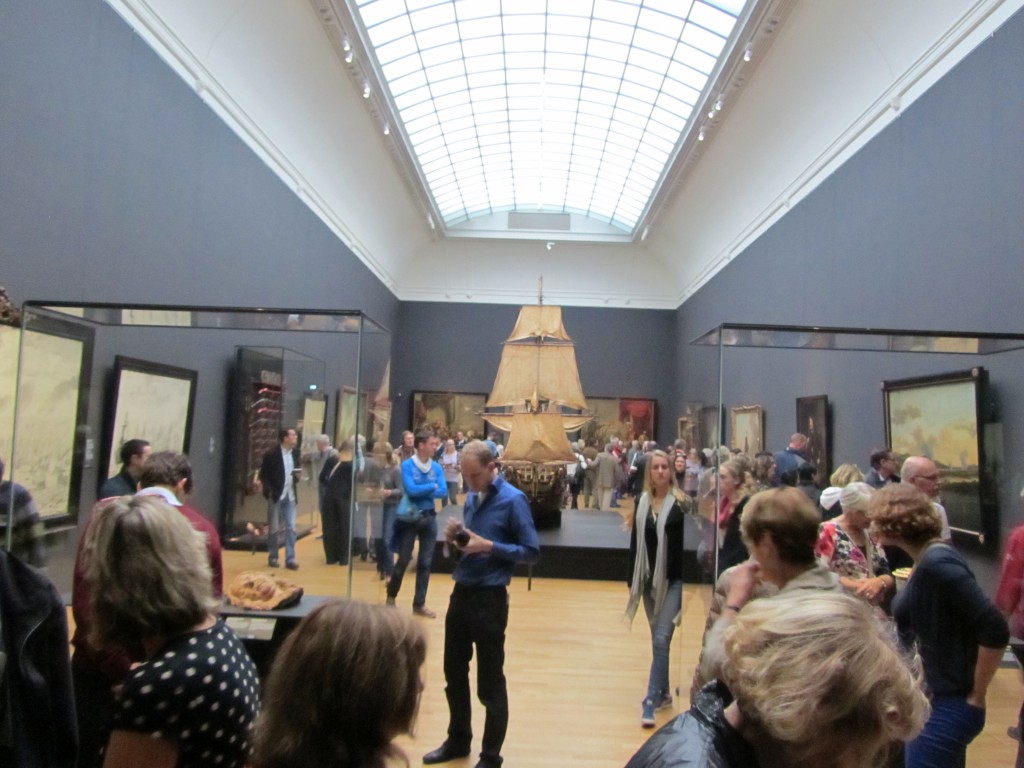
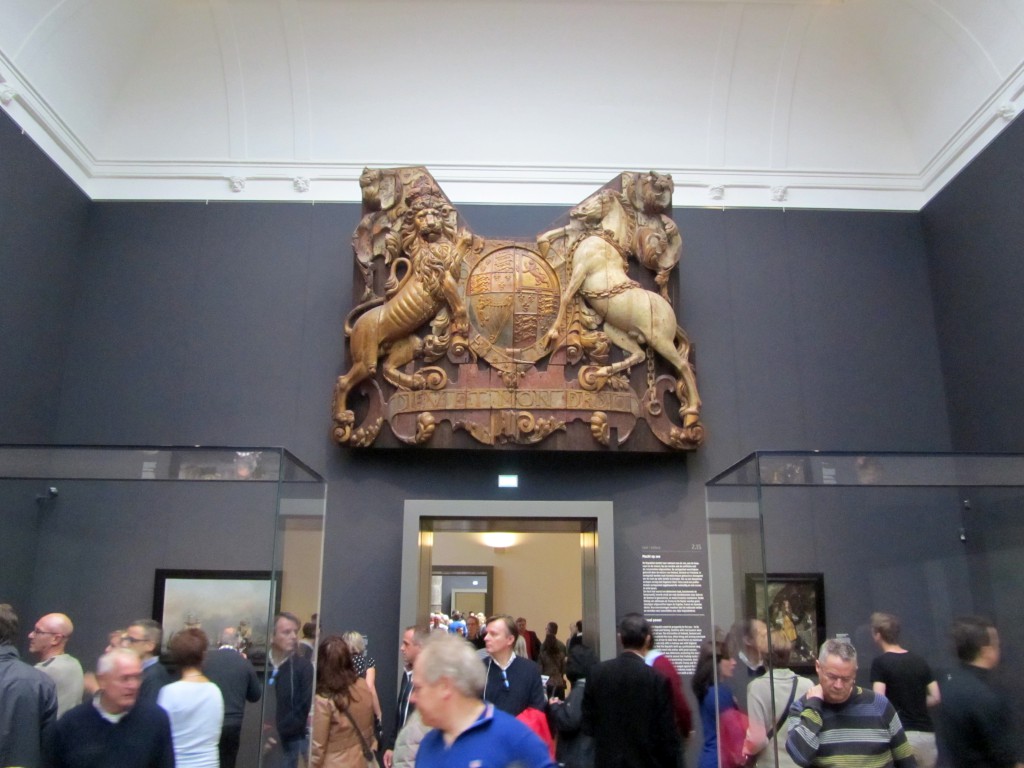
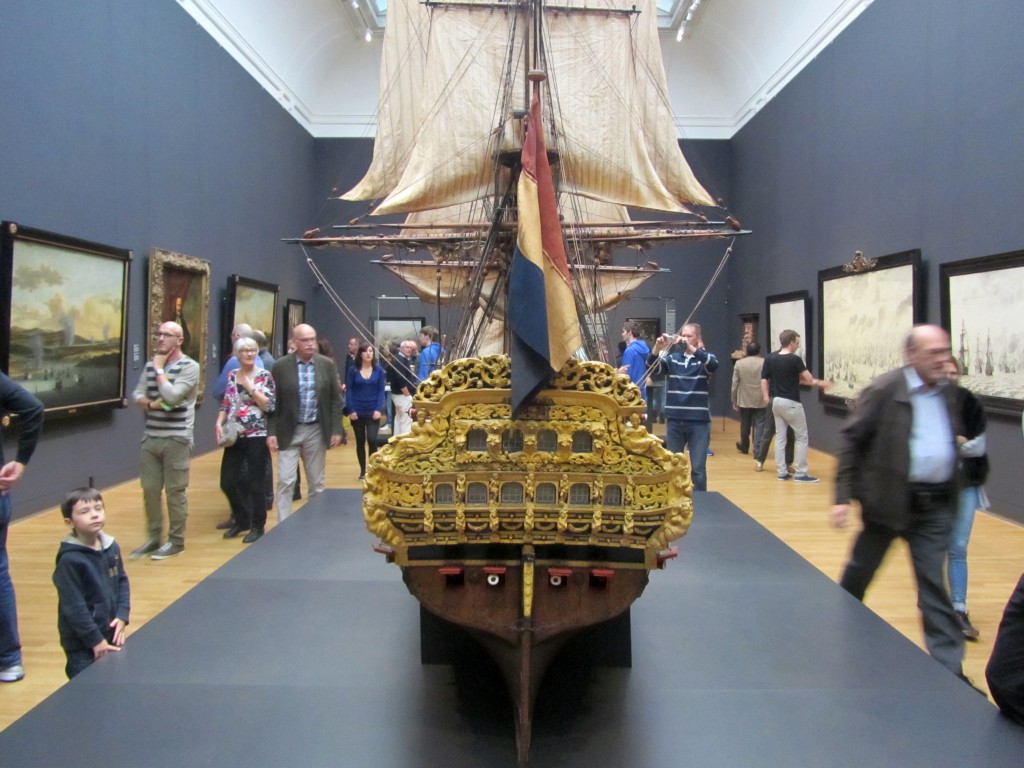
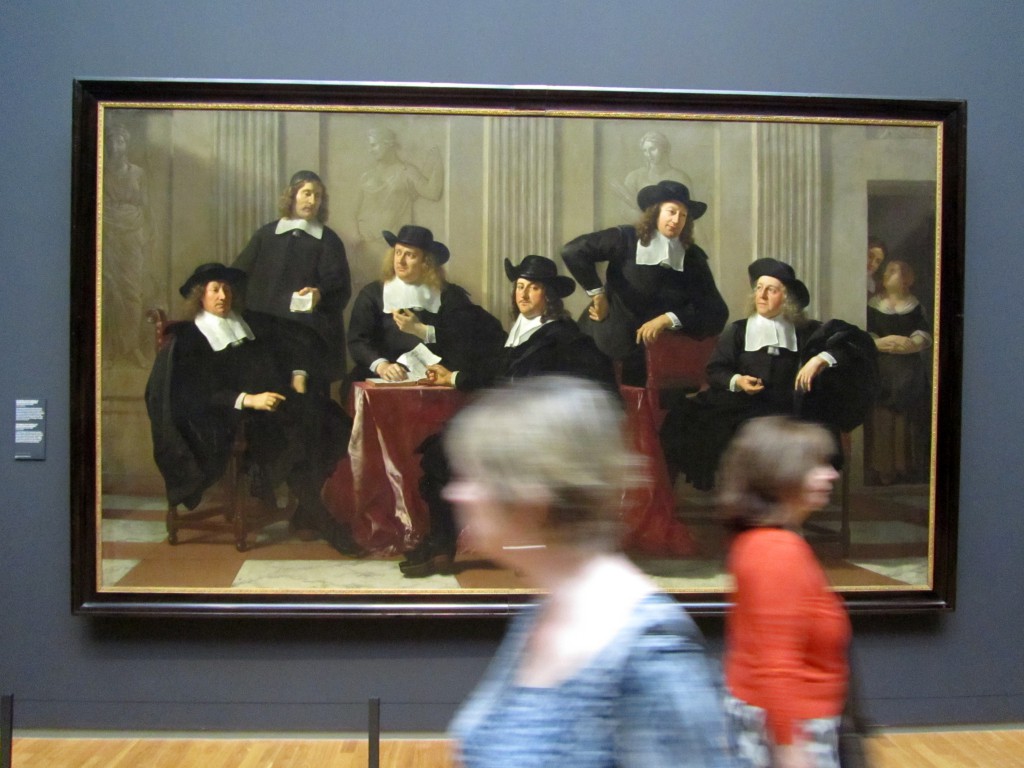
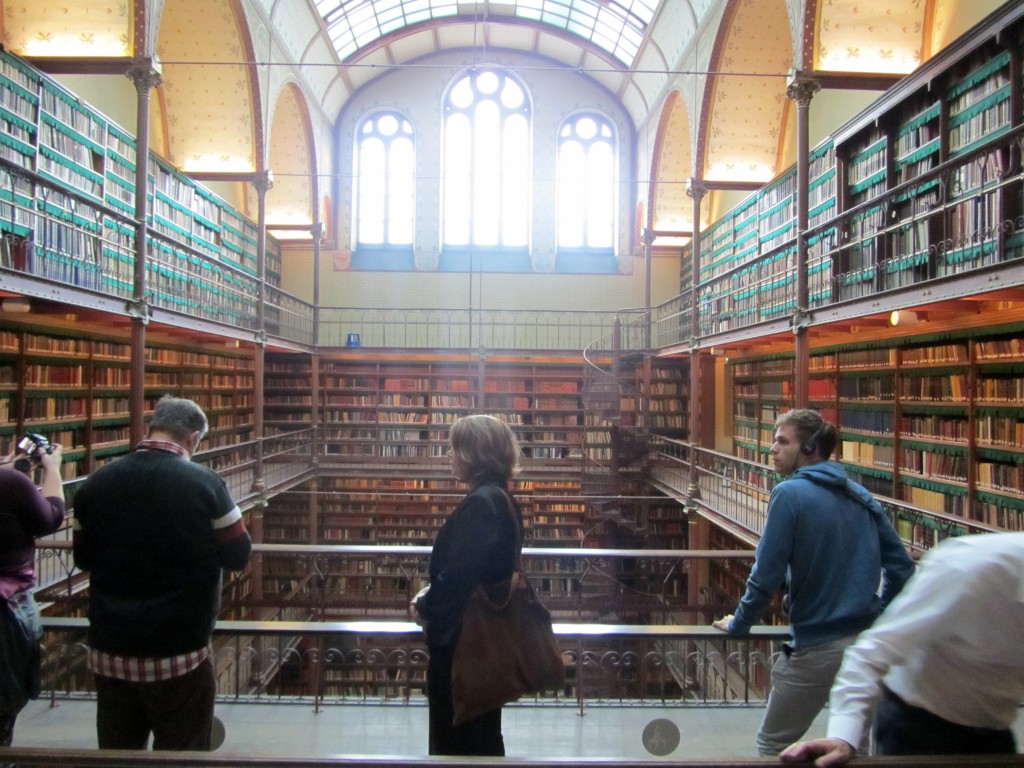
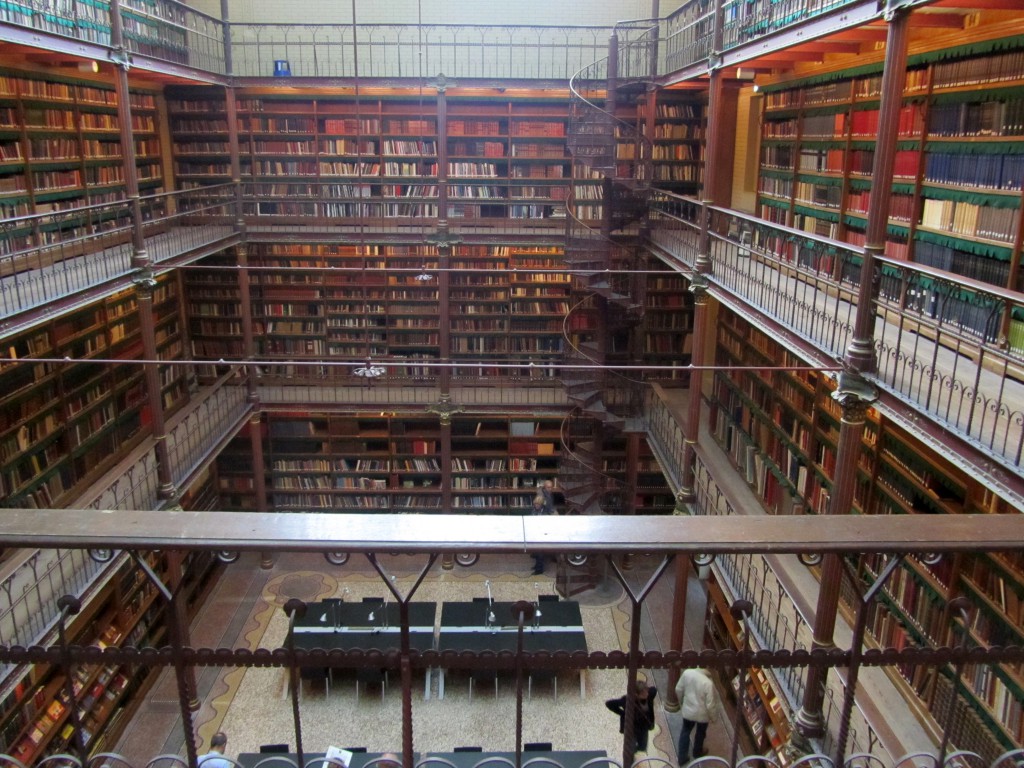


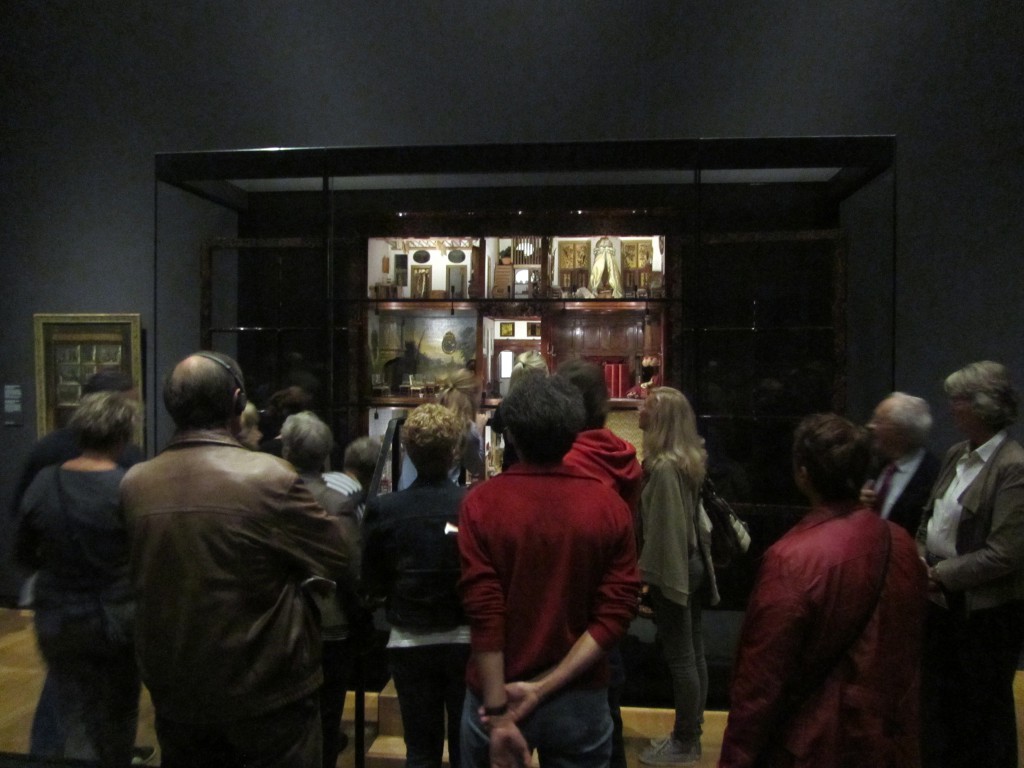
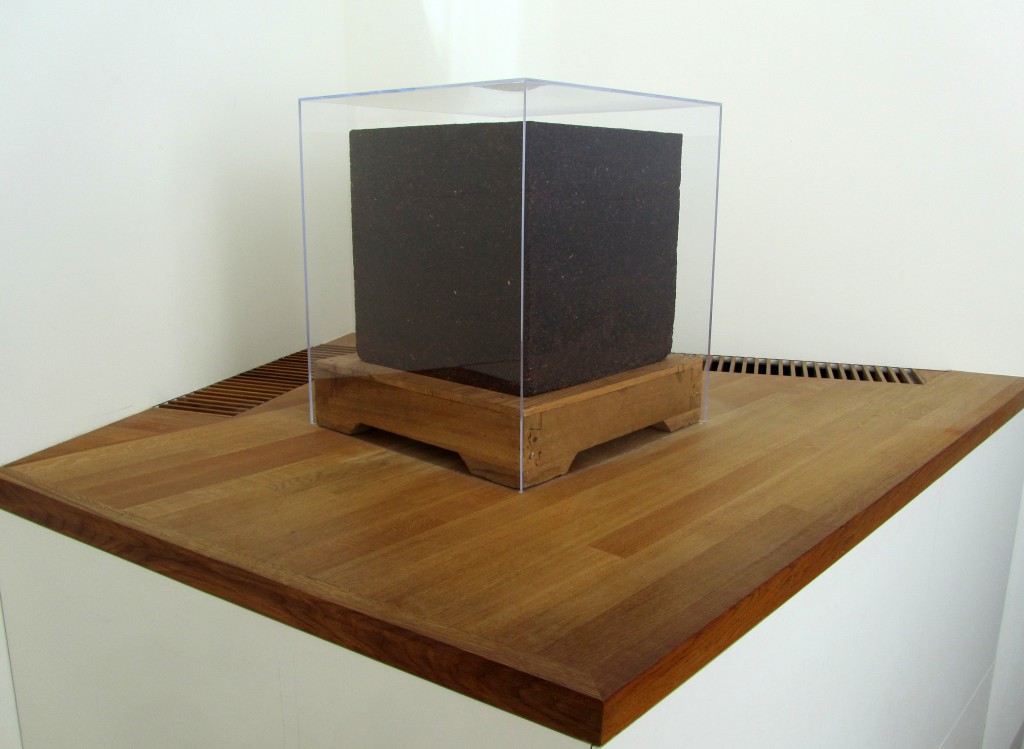
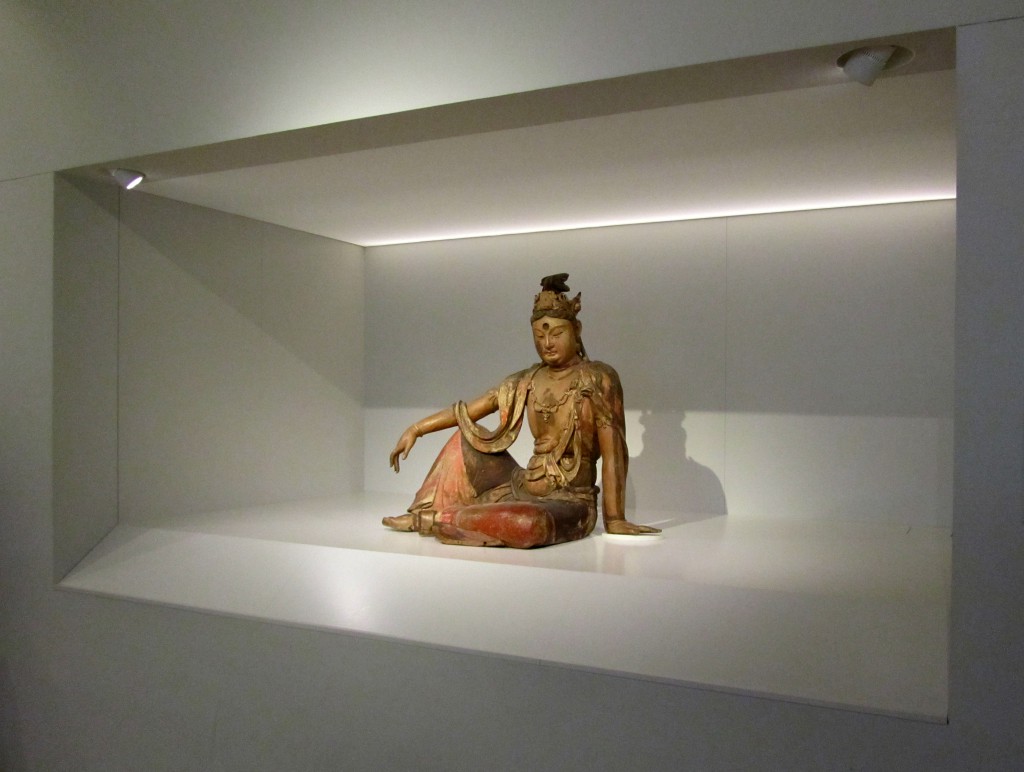
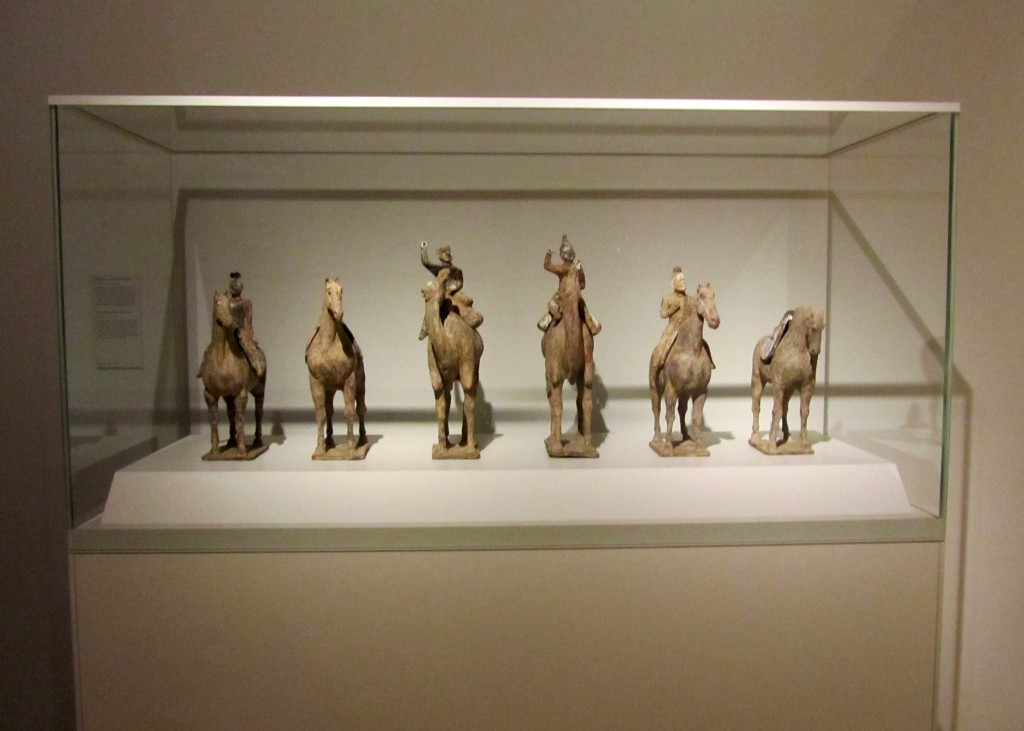

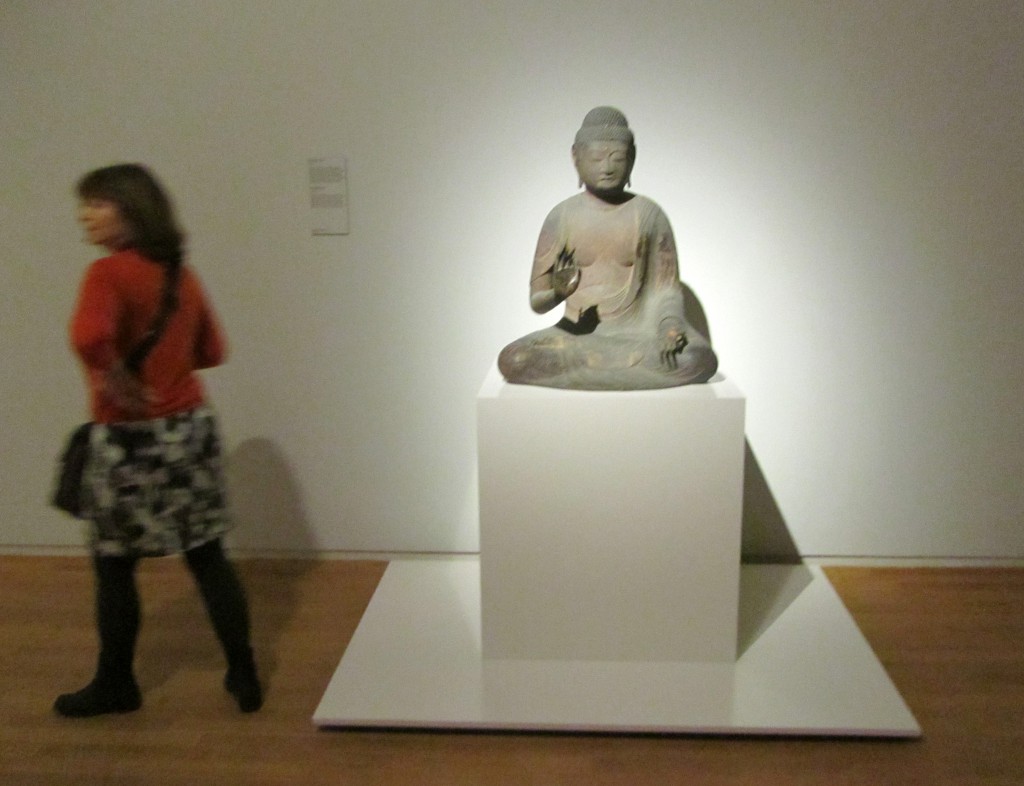
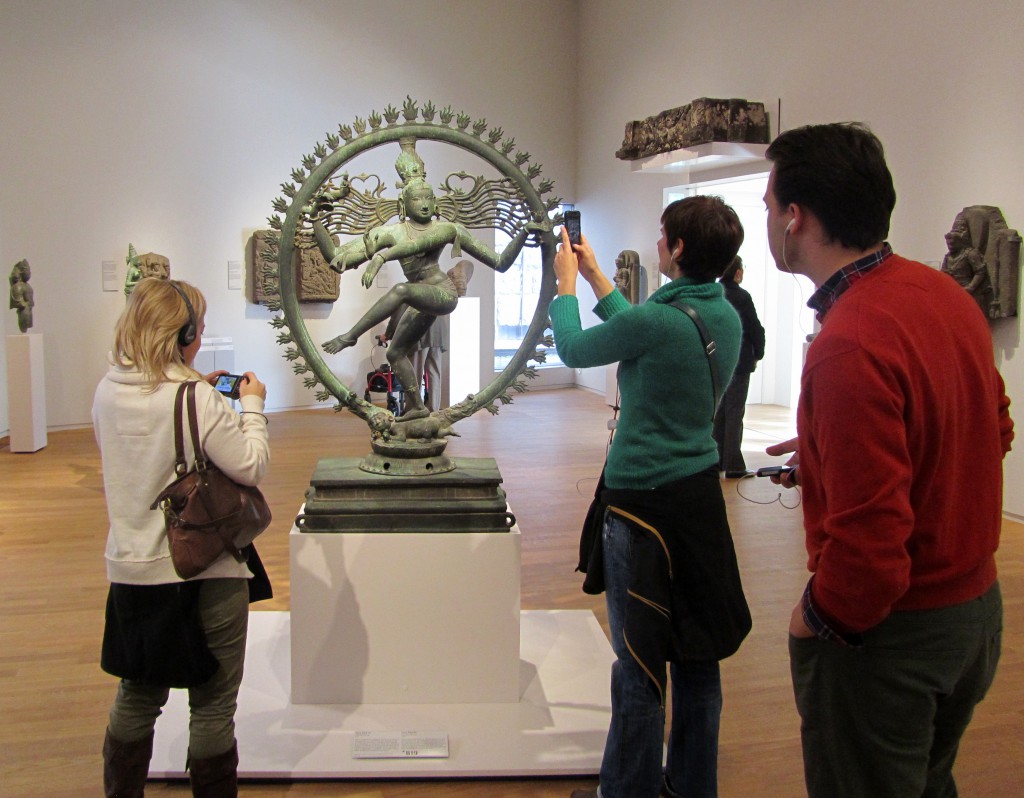

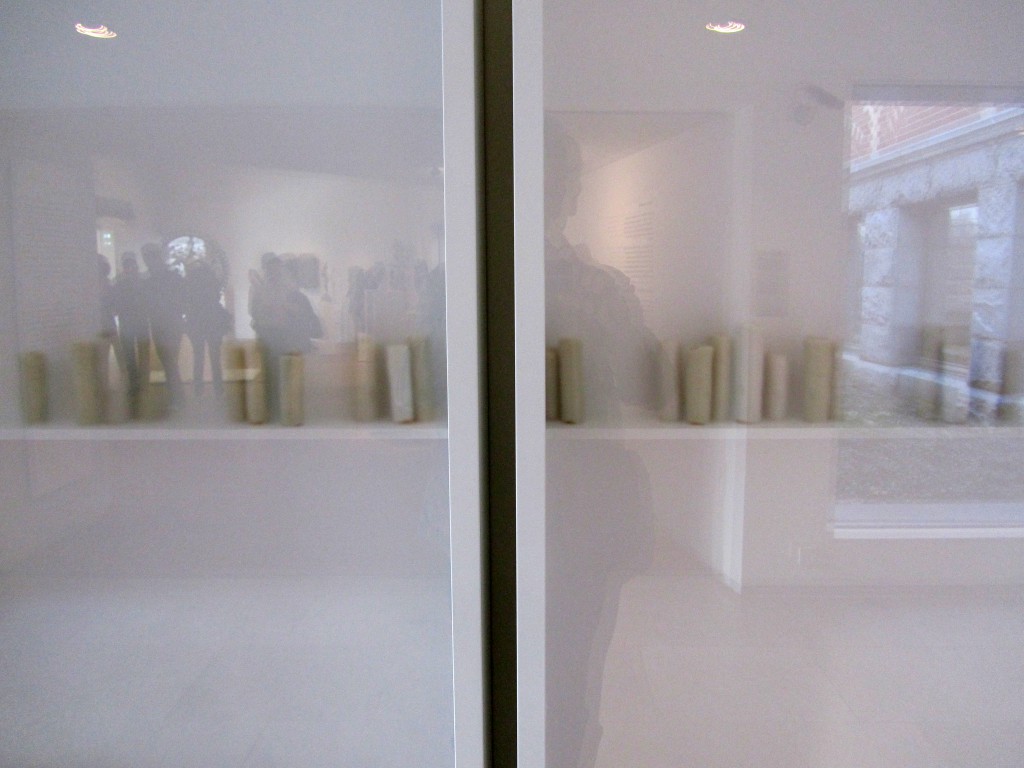
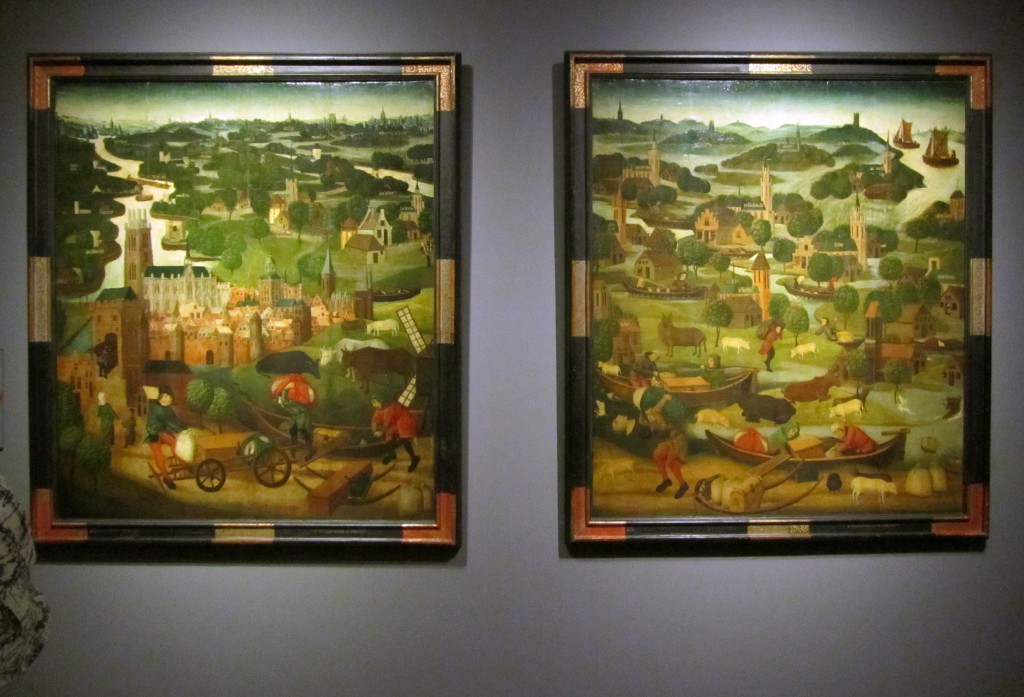

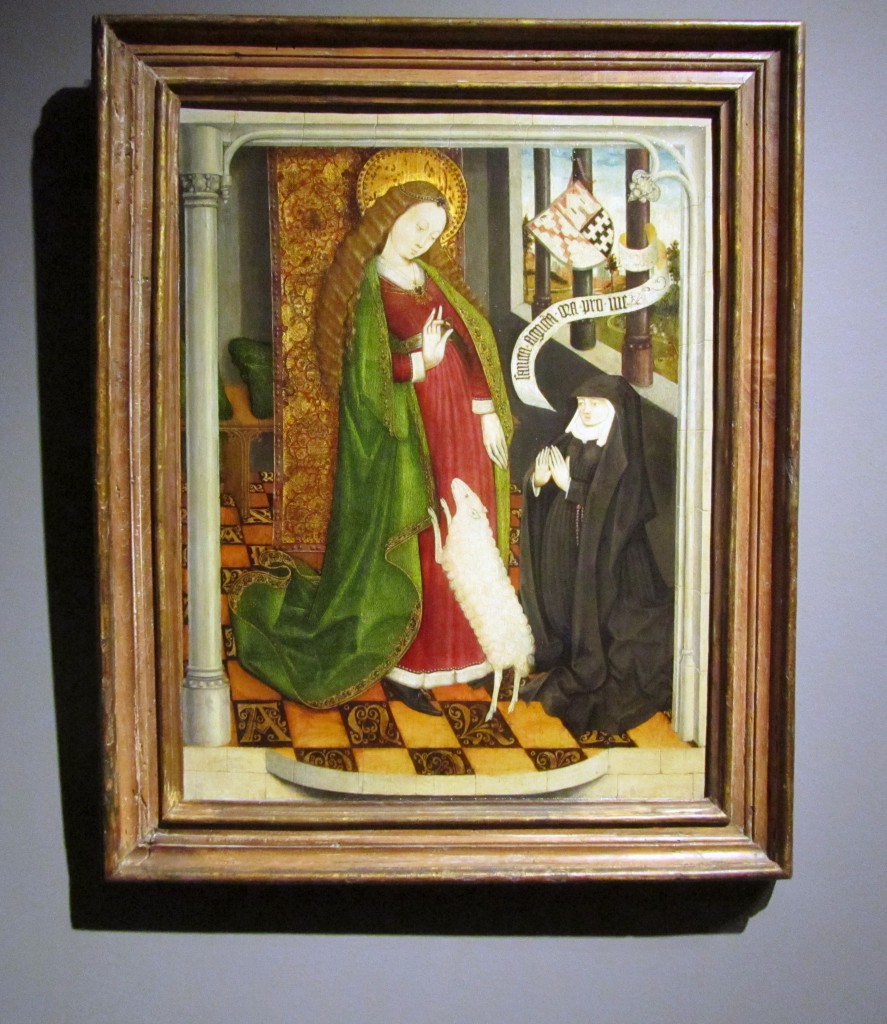
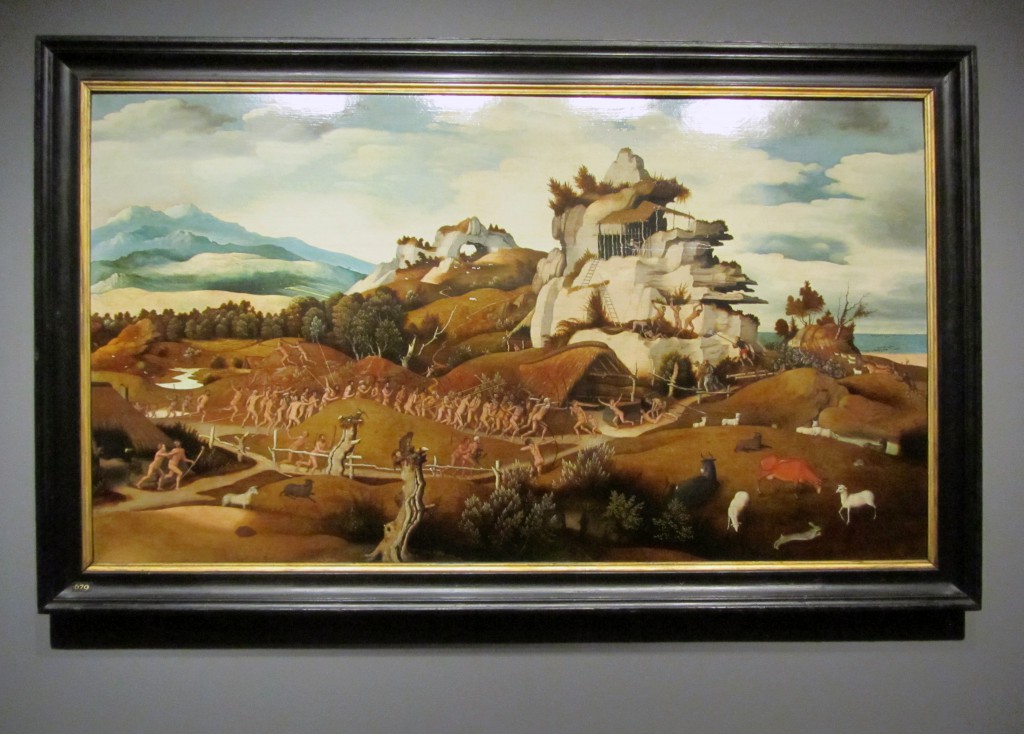

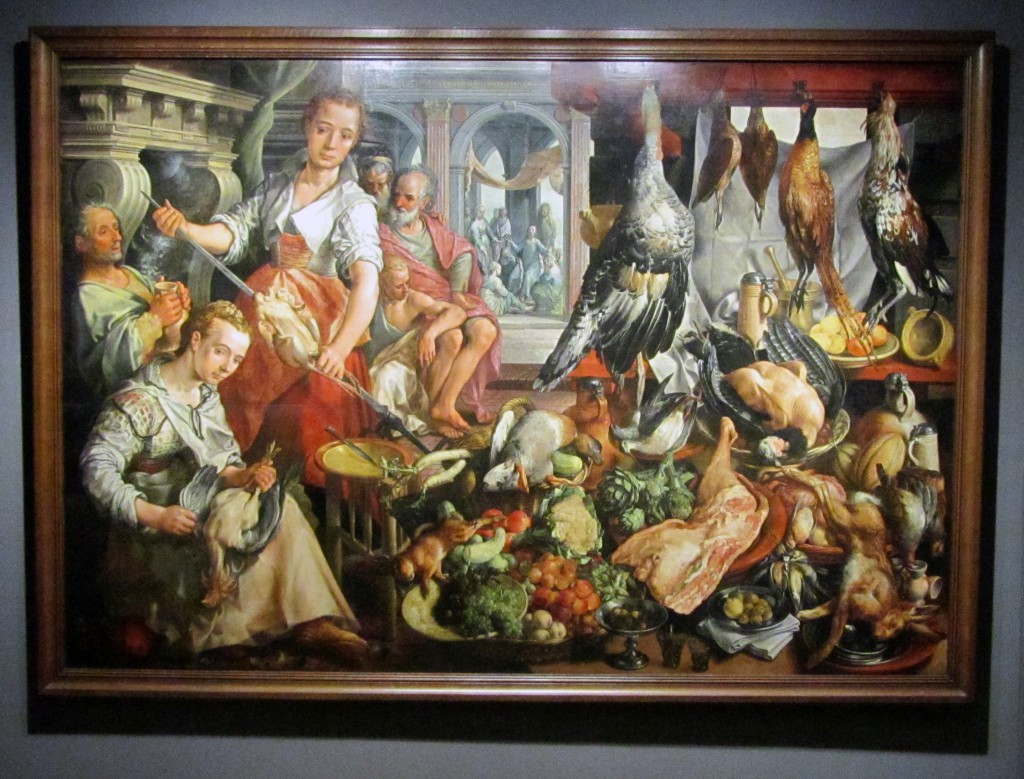
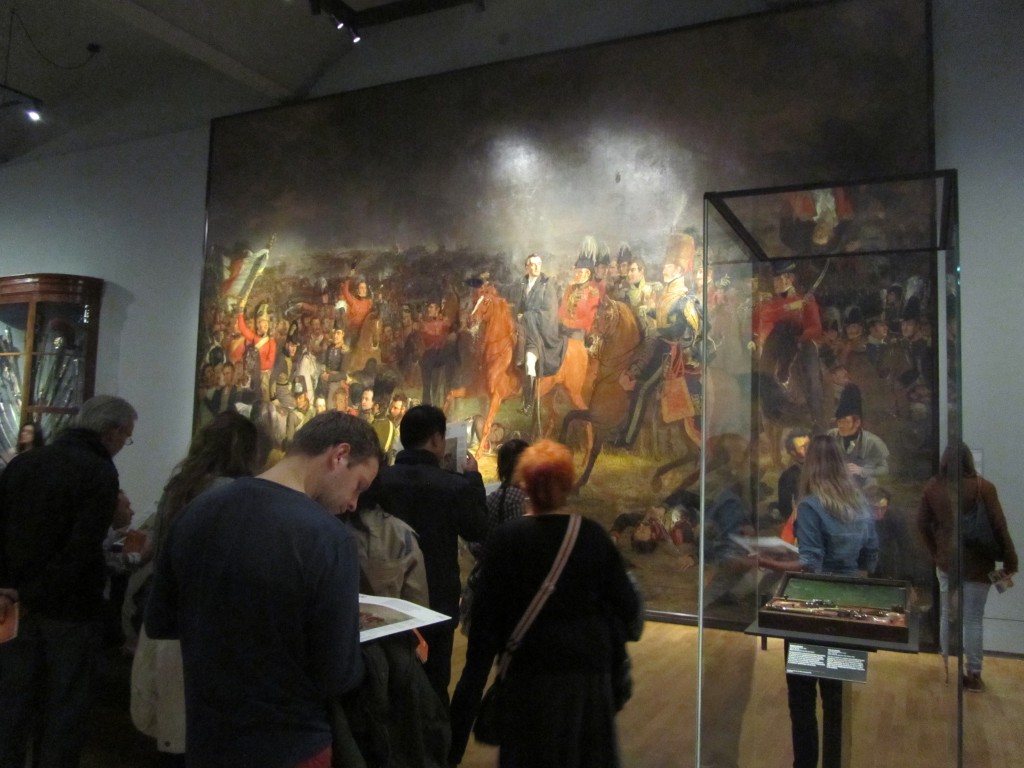



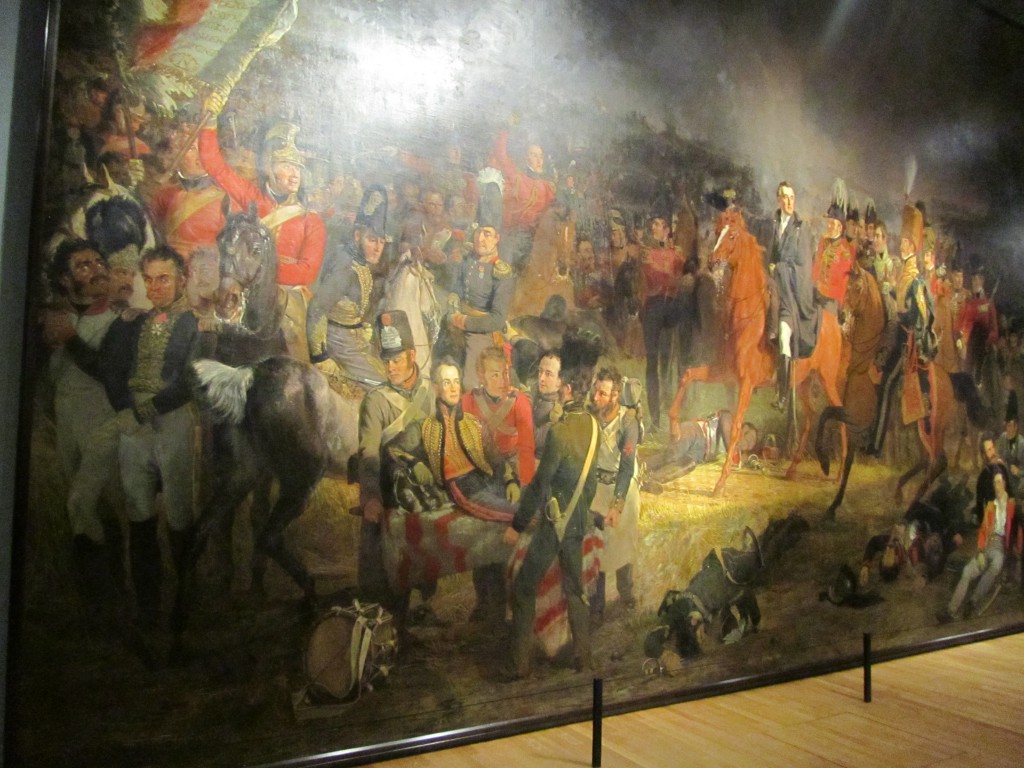

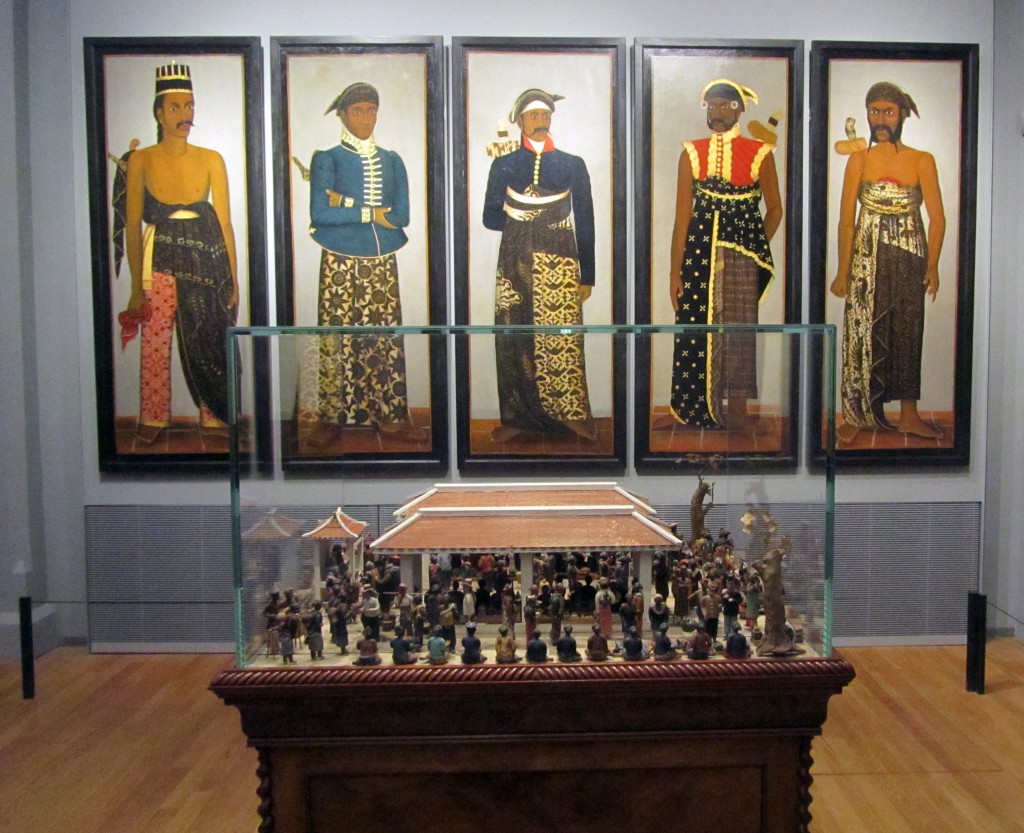
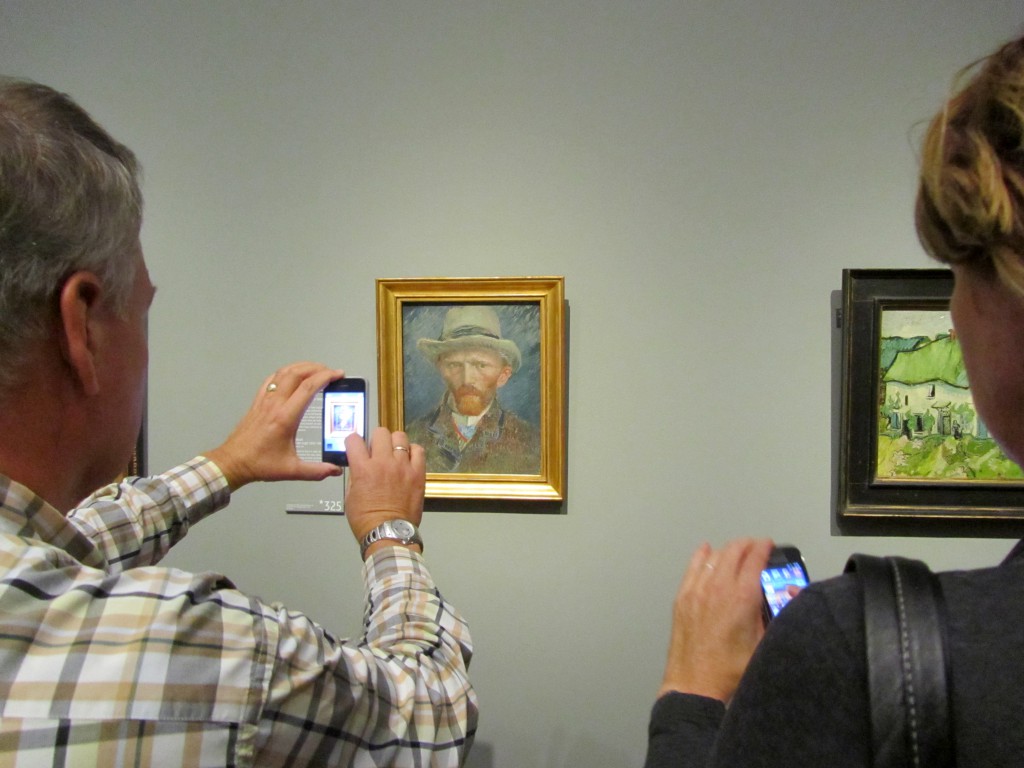

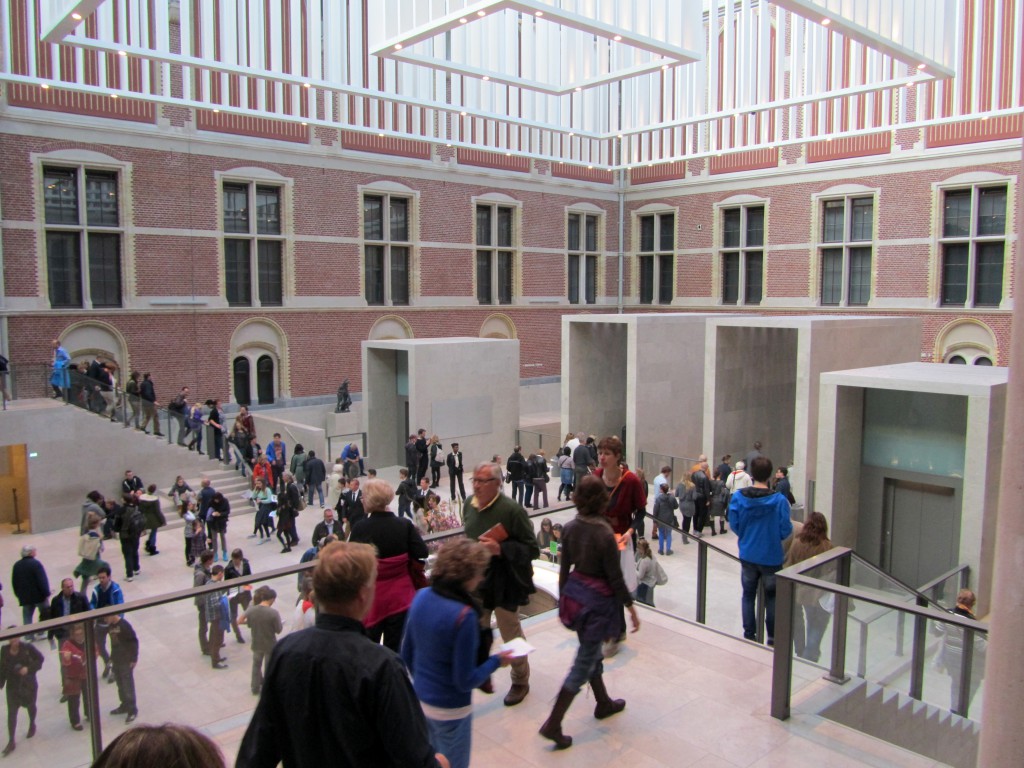
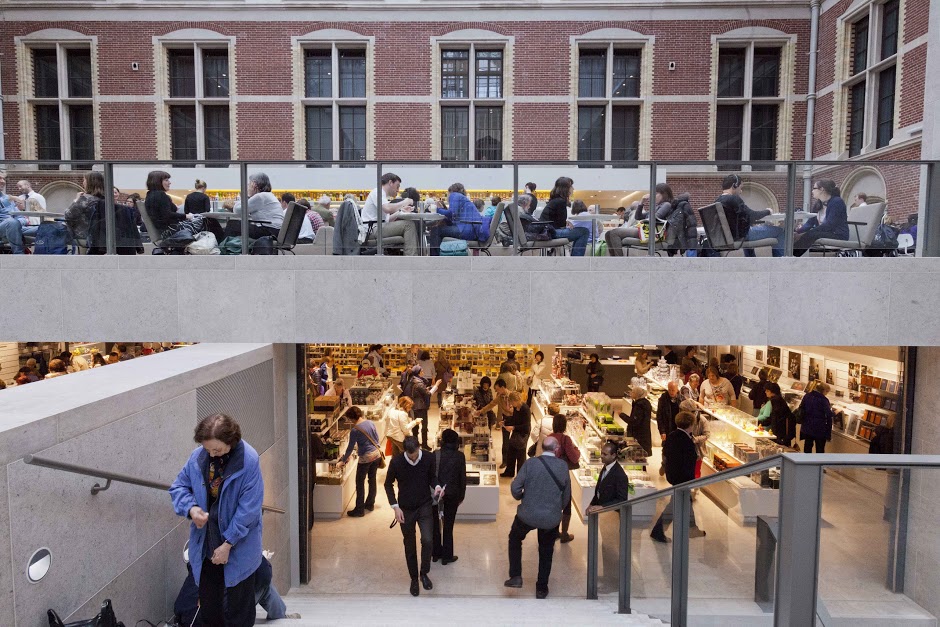
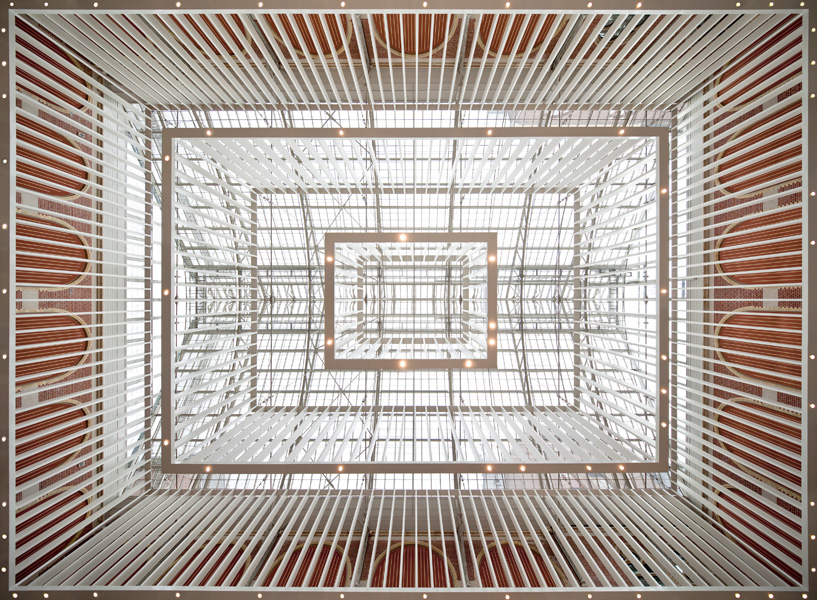
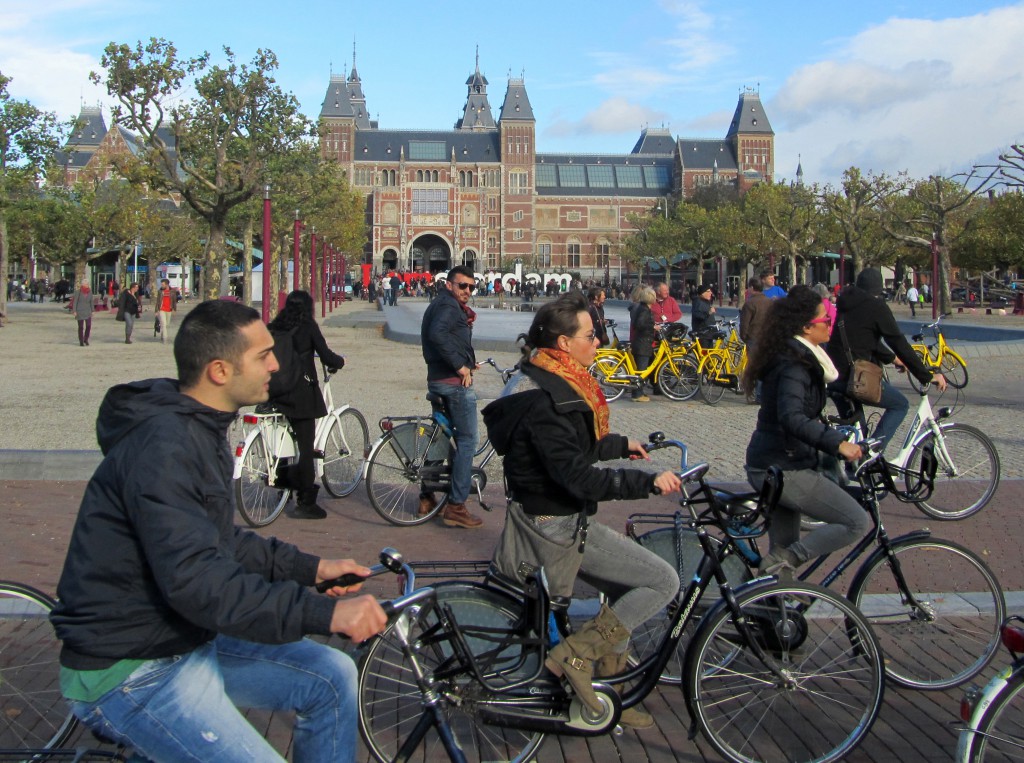
Fabuloso
Having an enjoyable hour catching up on all your blogs. So many treats here…I’m intrigued by that amazing jacket, do you know what it was for?
Thanks Sarah. That jacket is beautiful. I just searched for it on the Rijksmuseums’s wonderful website and I think I found it. It’s a heraldic tunic made for the funeral of Prince Frederick Hendrick of Orange-Nassau. See it here – https://www.rijksmuseum.nl/en/search/objecten?q=nassau+tunic&p=1&ps=12&ii=0#/NG-KOG-42,0. Thanks for looking.
PS: I saw this and thought of you!